

6 Best Performance Cruising Catamarans (Buyer’s Guide)
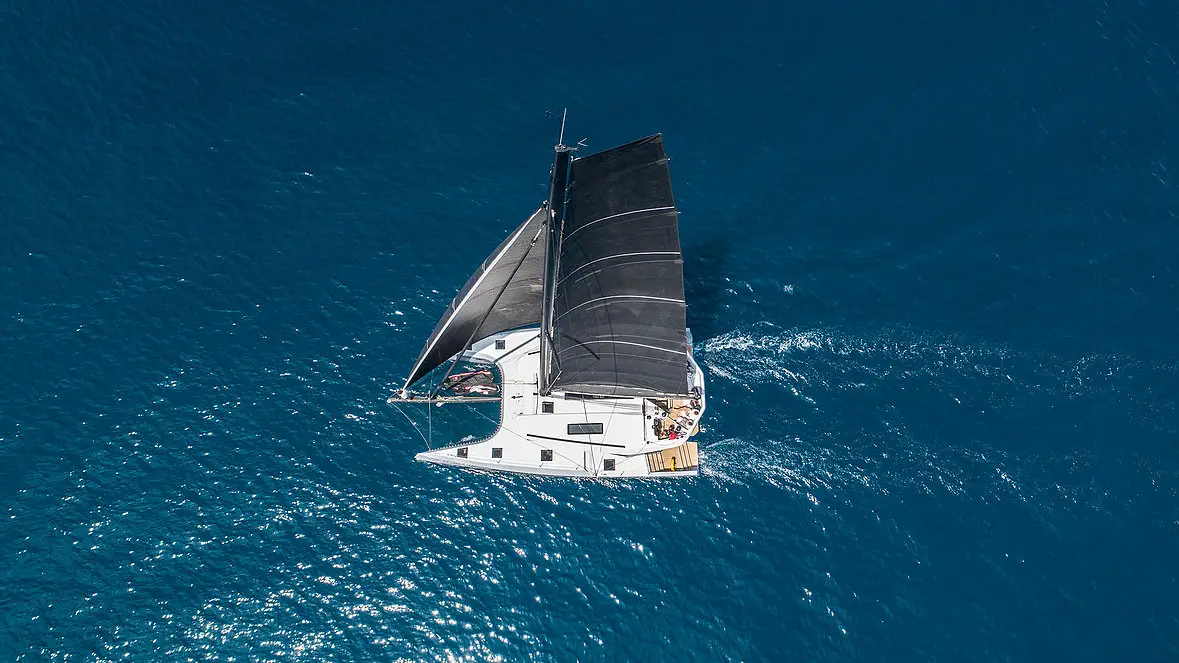
As an Amazon Associate, we earn from qualifying purchases. We may also earn commissions if you purchase products from other retailers after clicking on a link from our site.
Performance cruising catamarans are impressive-looking vessels that focus on speed above comfort. These fast boats are ideal for racing and long cruising vacations. But with the numerous brands and models on the market, how do you know which is the best one?
The best high-speed performance cruising catamarans are the Outremer 4x, McConaghy MC50, Nautitech 44, Gunboat 62, Balance 526, and Marsaudon Composites ORC50. All these boats deliver outstanding speeds and are light in weight, relatively comfortable, and incredibly safe.
This article will explore the brands and models that I believe have the best combination of performance and comfort . We’ll look at their speeds and what makes them cruise so fast. We’ll also examine the factors to consider when shopping for a performance cruising cat.
Table of Contents
How Fast Are Performance Cruising Catamarans?
Cruising catamarans are generally faster than monohulls of similar lengths. This means most well-built and well-balanced cats will arrive at their destination much sooner, and the cruise is much more comfortable. Performance cruising cats like the Nautitech include deep daggerboards and rudders, narrow waterline beams, hull chines, and big sail plans that allow for faster sailing than a standard cruising cat.
Outremer 4X
Outremer Catamarans are well-known for their high speeds. These exciting cats sport brilliant designs, narrow bows, and large rigs. Built in Southern France, the vessels are strong and long-lasting since their structures feature materials such as carbon, glass, and vinyl ester.
The Outremer 4x is a stable and comfortable high-speeding cruising catamaran that performs ocean crossings and confronts any weather with remarkable ease. Named the European Boat of the Year in 2017, this 48-foot (14.6 m) bluewater cruiser sails faster than wind speed and attains maximum cruising speeds of 20 knots.
The 4x is an upgrade of the extremely popular Outremer 45, thus retaining Outremer’s core values of speed, safety, and comfort. It’s built for maximum performance and enjoyment, with the lightweight, carbon fiber structure allowing for additional speed under sail .
Featuring comfort typical of much larger vessels, the Outremer 4X features 4 double cabins, hot water showers, a full kitchen, spacious storage, and excellent ventilation. There’s also an expansive deck, an unobstructed cockpit, and large trampoline areas. Most importantly, your safety is assured through the cat’s unique features including a robust structure, offshore design, stability, and unrivaled speed potential.
The 4x’s cutting-edge design makes it ideal for competitive racing or blue water cruising, and it does both without compromising your comfort, safety, or onboard livability. However, to sail at maximum speed, the boat must remain lightweight, requiring your interior to be fitted out quite minimally. The other downside is the high price tag; the Outremer 4X commands a price between $912,322 and $1,202,945 .
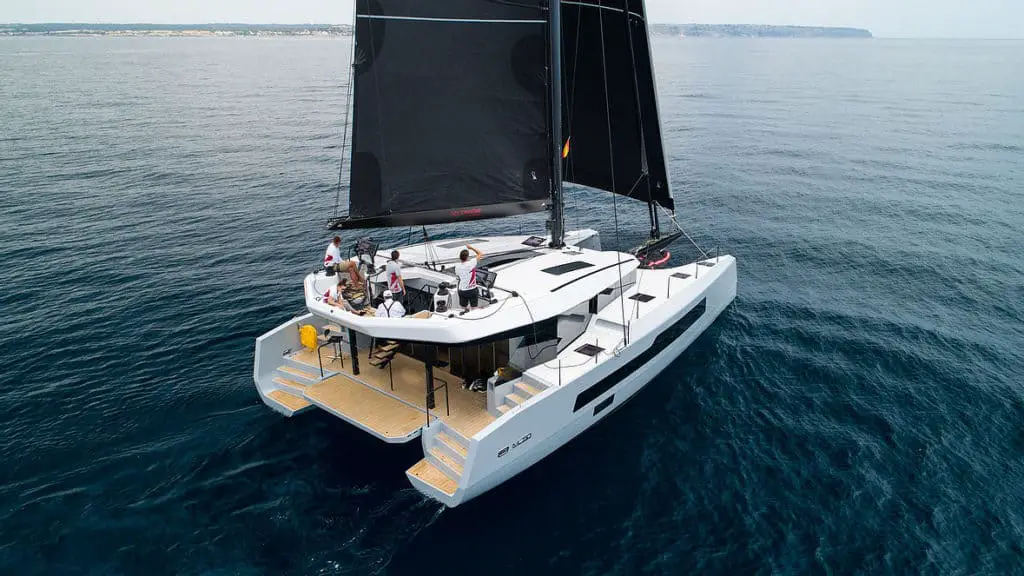
McConaghy MC52
The McConaghy MC52 is a performance luxury cruising cat reflective of McConaghy’s 50 years of experience in building high-tech composite projects. The luxurious boat features a flybridge, retracting centerboards, optimized hulls, and an open space bridgedeck combining the salon with the cockpit. You can also customize the boat to your specifications.
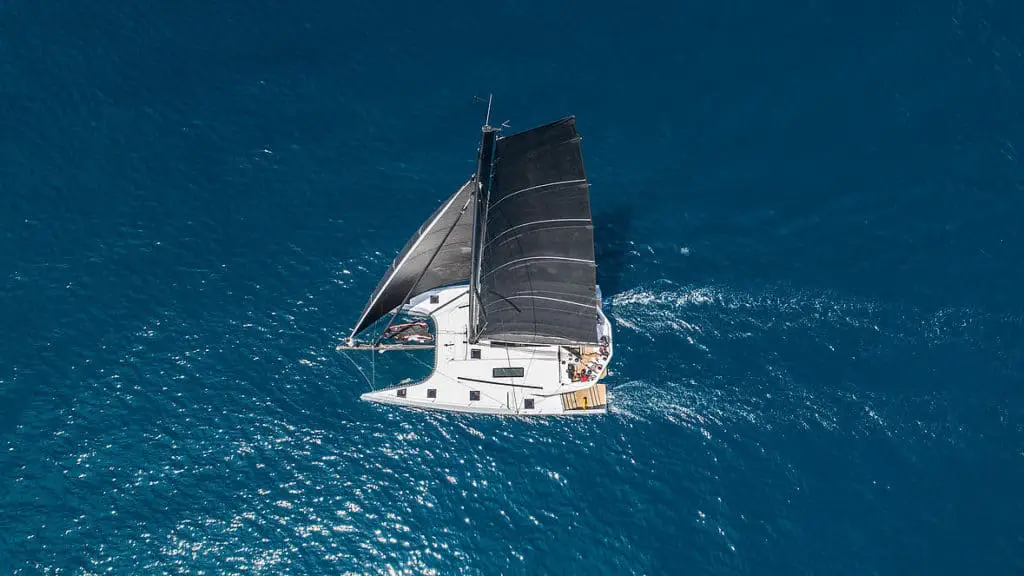
This hi-tech cat comes with sizeable sliding salon windows and frameless doors that provide fantastic views. Its wave-piercing bows can cut through waves, thus helping to increase performance by minimizing pitch resistance, while still retaining a smooth ride. Also, the saloon offers spacious dining space for up to 8 people, and the galley area is more like a penthouse.
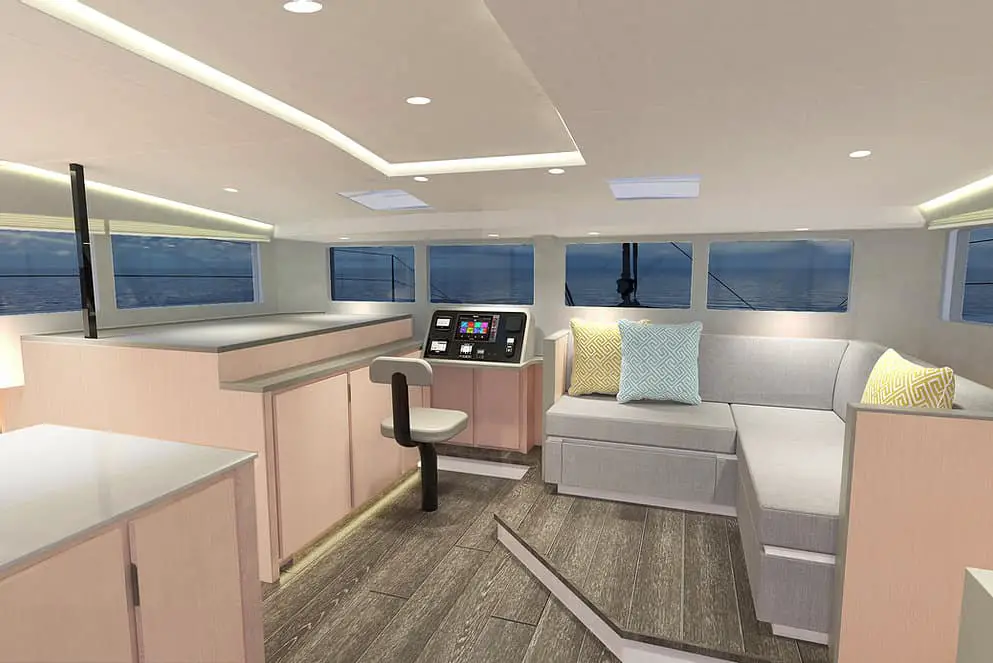
The manufacturer’s background in building high-end racing yachts has resulted in an incredibly strong and lightweight vessel capable of reaching 22 knots (40.7 km/h or 25.29 mph). The main downside to this boat is the boom placement on the mast, which is much higher than other high-performance cats. This makes accessing the mainsail somewhat challenging. It also increases the MC50’s center of gravity and center of effort.
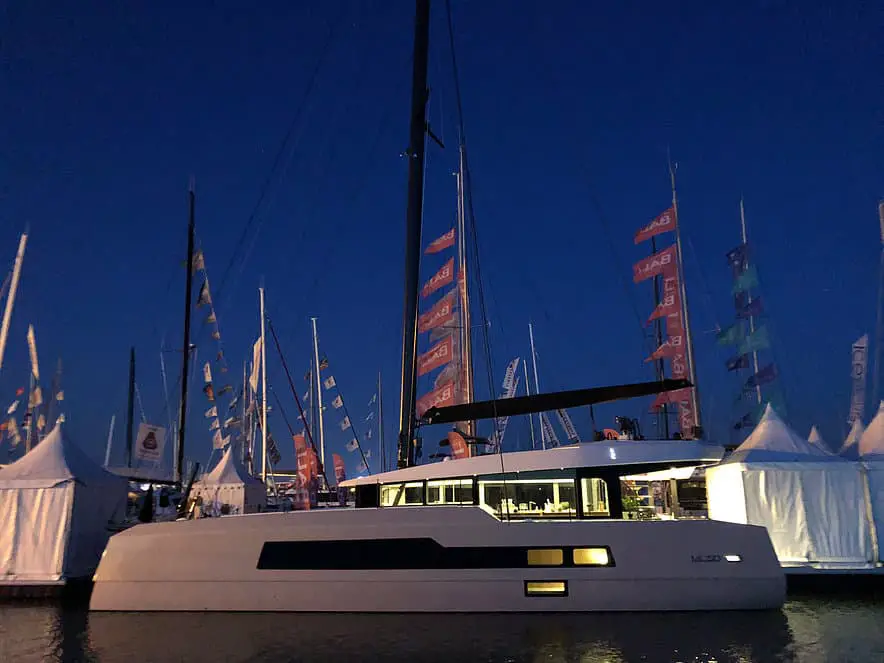
You can get the MC52 for about $1.6 million.
Nautitech 44
The Nautitech 44 easily blends comfort and fun to deliver an impressive sailing performance, whether you take short trips or long ocean crossings. The boat offers a good balance under sail, and it features helming stations on each hull. Plus, there’s an integrated hardtop bimini complete with sunroof opening. Slim hulls translate to higher speeds, with the vessel reaching up to 17 knots (31.4 km/h or 19.51 mph).
The well-laid-out interior boasts a functional design, ample storage space, plus all the equipment you require for ocean cruising, such as a fridge, watermaker, and solar.
Nautitech 44’s twin helms give you the real sailing experience with a fantastic view of the sails and great visibility when maneuvering into port. However, you might not appreciate being stuck in the aft helm position without protection in lousy weather or during hot days.
Nevertheless, the boat’s responsiveness makes sailing more pleasurable. Plus, it’s affordable; the price is between $236,000 and $334,000.
Marsaudon Composites ORC50
Marsaudon Composites vessels are ideal for both racing and cruising. The sporty-looking ORC 50 comes with large inverted bows, an angular coachroof, a high freeboard, and a sturdy rotating carbon mast. In addition, the vessel is light which allows it to accelerate quickly, while the angular coachroof offers lots of space and excellent visibility.
The ORC50 can attain 23+ knots (42.5+ km/h or 26.41+ mph) and is among the fastest high-performance livable multihulls. It’s capable of doing more than 350 miles (563.27 km) per day.
The downside to the ORC50 is it’s a bit technical to sail, thus requiring a skilled sailor. Furthermore, its immense power and speed can be intimidating to less experienced sailors. Solely designed for speed, the ORC50’s interior is simple, less roomy, and somewhat spartan; hence the boat might not be all that comfy. Still, it’ll get you where you want to go pretty fast, and it’s an excellent value for money at approximately $787,751.25.
Gunboat 62
The Gunboat 62 is a true high-speed catamaran capable of sailing at 20 knots (37 km/h or 23 mph) over true wind speeds and known to notch up speeds of 36+ knots (66.7+ km/h or 41.45 mph) on a surf. The initial 3 Gunboat 62 boats featured epoxy, E-glass, and carbon fiber construction, but the fourth vessel was all carbon, sported a taller rig and a more expansive sail area.
These structural features made the Gunboat 62s extremely light, and they formed the original luxury high-performance cruising cats.
This multihull sailboat boasts a carbon mast, round hull sections for a minimized wetted surface area, high-aspect rudders, and retractable daggerboards. The steering station offers 360-degree visibility and sports overhead hatches that you can use to monitor the mainsail trim. The boat also contains 3 private cabins with queen berths, 2 spacious heads with showers, an aft cockpit, galley, and lounge.
On the downside, Gunboats are pricey cats; hence they’re also expensive to maintain. The Gunboat 62 isn’t that spacious either as it’s more focused on speed, but it’s extremely comfortable, plus there’s plenty of space for hanging out. You can buy this catamaran starting from $2 million .
Balance 526
Built with a combination of carbon fiber, E-glass, epoxy, closed-cell foam, and composite bulkheads, this boat is strong, light, and can withstand terrible weather. The retractable daggerboards allow for good upwind performance. All high load areas contain carbon fiber, while furniture and cabinets feature cored sandwich construction, producing the lightest yet most robust catamaran.
A Balance 526 will reach speeds of up to 20knots without stressing the rig too much.
The boat is available in various layouts and comfortably accommodates 6 people. The spacious aft cockpit and saloon provide panoramic visibility. And since Balance 526 can handle the extra weight, you get performance plus all the creature comforts you desire.
Still, Balance 526’s pricing is on the higher end, beginning at $1,440,000 . Also, the slender hulls result in less space down below. Nevertheless, the boat lives up to its name, achieving the perfect balance between superb performance and comfort.
What Makes Performance Cruising Catamarans So Fast?
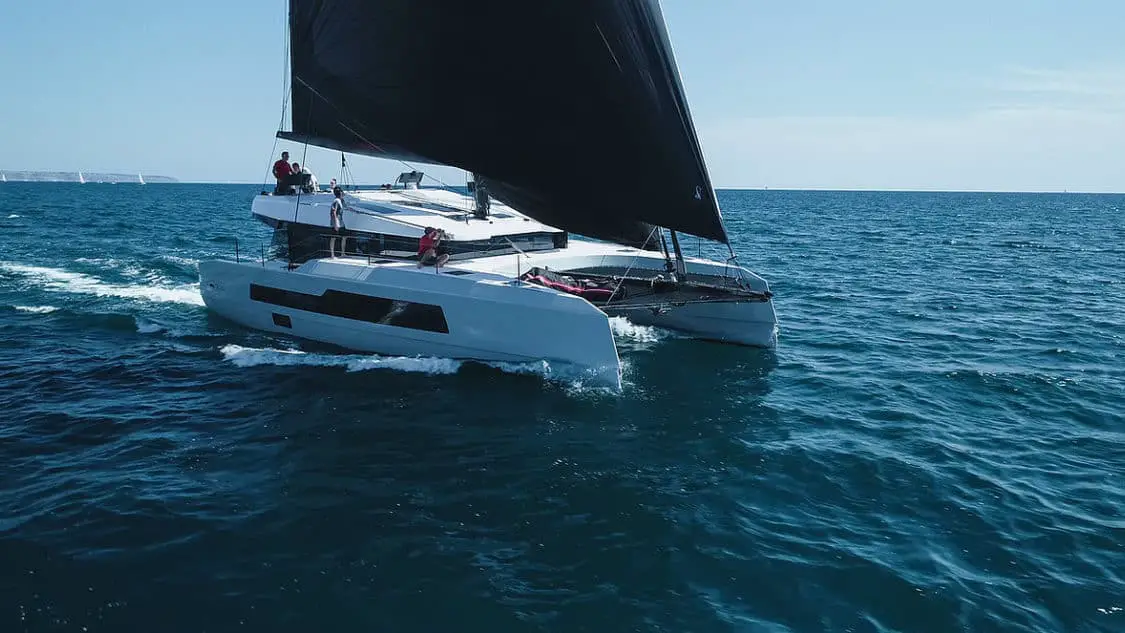
Performance Cruising Catamarans Have Narrow Hulls
Performance catamarans contain two small narrow hulls, which cause them to have less water resistance. Smaller hulls mean the vessels have much smaller bow waves to fight, allowing them to move extremely fast. In addition, the less hull area is underwater, the faster the boat is capable of moving since there’s less drag.
Having said that, it’s important to note that a narrow hull is more prone to burying its bows in rough seas. The wider the hull, the more buoyancy it offers, but only up to a given point. After which, the excessive width becomes unmanageable and performance suffers. The key lies in finding the right balance.
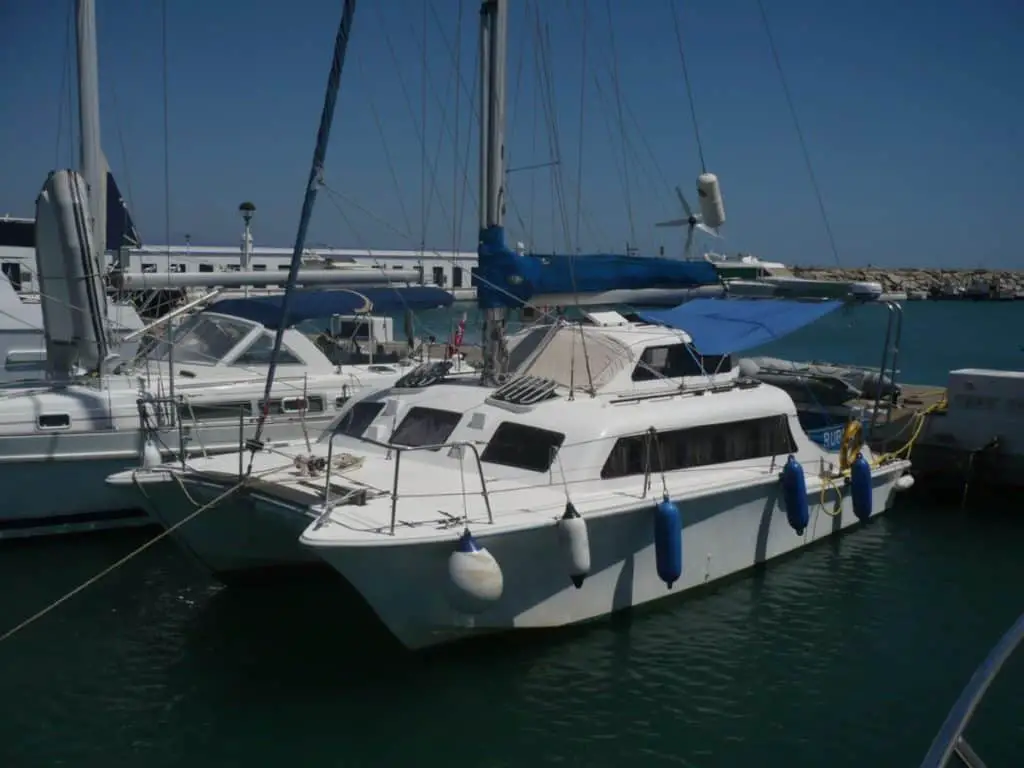
Performance Cruising Catamarans Have Considerable Length
The longer a cruising cat is, the faster it’ll move. While each vessel bears a maximum hull speed, in most cases, the lengthier the boat, the higher the speed it can reach. The length of the hull (length on the waterline) also has a significant impact on the speed performance. Thus, the cat attains maximum speeds when the wavelength is equal to the length on the waterline (hull speed).
Therefore, the longer the length of the hull, the better the performance of a high-speed cruising cat. You can also compare two cruising cats’ speeds based on this measure.
Performance Cruising Catamarans Have Quality Builds
Modern cat manufacturers continue designing more innovative high-performance cruising cats that deliver a new blend of performance and cruising features. They achieve this by using advanced construction materials, better daggerboard designs, and creative weight allocation. They also keep a keener focus on onboard amenities. For instance, asymmetrical daggerboards placed midships in each hull can help achieve proper balance and hull trim.
The overall goal is to design cruising cats that offer high speeds, outstanding performance, and enough offshore comfort.
Here’s an article if you are wondering what daggerboards and centerboards are and why they impact performance so much.
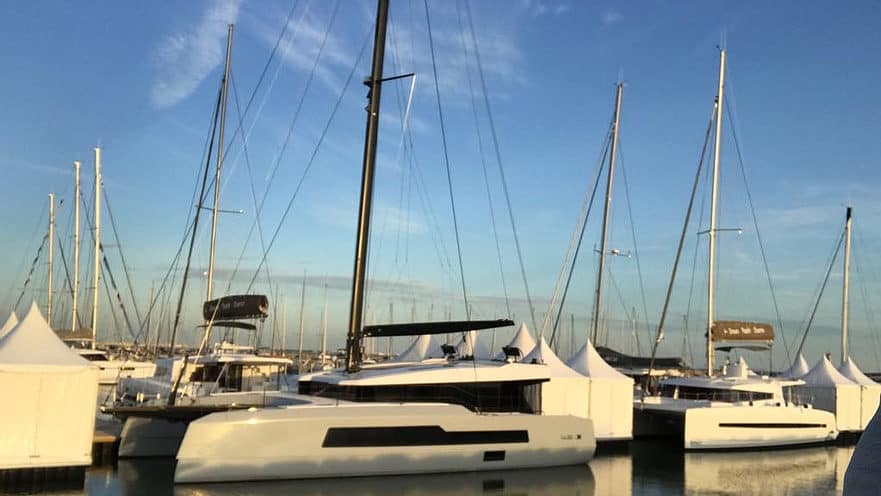
Performance Cruising Catamarans Are Light-weight
The lighter a cruising catamaran, the greater its performance. And some of the most popular high-performance catamarans find an optimal balance between performance and comfort. As a result, modern performance-based cruising cats have embraced the use of carbon composite construction for hulls, daggerboards, and rigging, instead of the somewhat heavier glass fiber materials.
A weighed-down cat produces less speed, which means excess immersion of the hulls renders the boat sluggish . The hull submersion also reduces the bridge deck clearance, promoting uncomfortable hull slamming.
You won’t find much difference in top speed between performance catamarans bearing similar lengths because they all have displacement hulls and mostly sail to hull speed with occasional surfing. This means that under skilled hands, these cats should exhibit roughly the same performance. A cruising cat’s performance is also highly dependent on the state of the sea, wind direction, and speed, amongst many other factors.
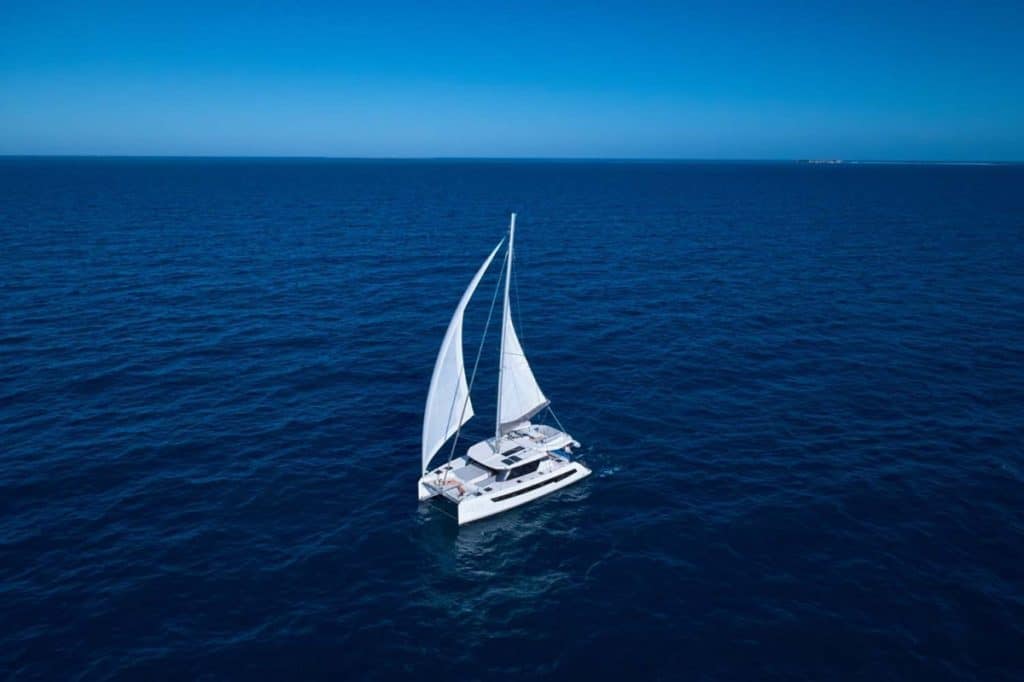
What To Consider When Choosing a Performance Cruising Catamaran
Speed is the number one consideration when choosing a high-speed cruising cat. Yet there are other factors just as important since they contribute to the overall cruising performance, including:
- What you’ll use the vessel for and where. Are you planning on doing coastal cruising or serious offshore cruising? Consider the number of people that you’ll be sailing with and the activities you’ll engage in. This also helps determine the size catamaran you’ll need.
- Comfort. While some racing enthusiasts might prefer spartan accommodation plans, most enjoy relative comfort on the high seas. In any case, modern high-speed cruising cats are designed to provide a certain level of creature comforts. And since most performance cats are custom-made, new boat owners may decide precisely which features to include in their cats.
- Quality. To produce light boats, builders employ the use of fine resins, carbon, epoxies, foam cores, and fiberglass. They build using a combination of vacuum-bagged techniques, foam cores, foam composite bulkheads, and make furniture and cabinetry with cored sandwich construction .
- Livability. One cannot underrate the appeal of sailing in a vessel with no heeling, not to mention the high privacy attained from separate living and sleeping areas. Panoramic views and exceptional deck space for lounging and entertaining are also essential in ensuring maximum cruising comfort. Fortunately, most high-speed cruising cats offer all these features and more.
- Equipment. Sailing upwind is a challenge for cruising cats since they tend to make lots of leeway. To make things easier, high-speed cruising cats come equipped with bigger rigs and either daggerboards or centerboards. However, this also means skilled sailors are required to operate them.
- Cost. Catamarans are generally expensive, but a cat built with longer, leaner hulls and less costly materials can still give an outstanding performance. Such materials include foam cores, epoxy bulkheads, and epoxy resins. Furthermore, it’s not necessary to use only carbon to build a lightweight boat.
Final Thoughts
Performance cruising catamarans are built using exotic, high-tech, lightweight materials to deliver an electrifying sailing experience. And as we’ve seen from the above list, these boats deliver performance plus much more. They’re not only speed cruisers, but they also provide a smooth, comfortable, and enjoyable cruising experience.
So, whichever option you go for – from the luxurious Gunboat 62 to the much more affordable Nautitech 44 – you’re sure to get a boat that suits your needs.
- Wikipedia: Spinnaker
- Wikipedia: High-Performance Sailing
- Yachting World: Fountaine Pajot Elba 45 Review
- Aeroyacht: Catamaran Speed
- Cruiser’s Forum: Nautitech 44…
- Nautitech Catamarans: Nautitech
- Katamarans: Marsaudon Composites ORC50 (TS5) Review
- Outremer USA: New Outremer 4x Performance Catamaran
- Dutoit Yacht Design: Balance 526 Review
- Go Downsize: How Fast Do Catamarans Go?
- Catamaran Guru: The Cruising Catamaran Performance Debate
- The Boat App: The Fastest Cruising Catamarans of 2020
- Sail Magazine: Performance Cruising Cats Set New Standards in Sailing Speed
- Cruisers Forum: Fast Cruising Catamarans – How Fast?
- Lagoon – Inside: The Secrets of a Catamaran’s Performance
- Sail Magazine: 10 Great Cruising Cats
- Cruising World: 40 Best Sailing Catamarans and Trimarans, Cruising Catamarans…
Owner of CatamaranFreedom.com. A minimalist that has lived in a caravan in Sweden, 35ft Monohull in the Bahamas, and right now in his self-built Van. He just started the next adventure, to circumnavigate the world on a Catamaran!
Leave a Reply Cancel reply
Your email address will not be published. Required fields are marked *
Save my name and email in this browser for the next time I comment.
Recent Posts
Must-Have Boat Gear for Catamaran Sailors!
Sailing is probably the most gear-intensive activity I've ever done; there are so many decisions to be made about what gear to buy now, for tomorrow, and what to definitely never buy. The gear on...
6 Best Trailerable Trimarans For Bluewater and Coastal Sailing
Having a boat costs a lot of money, even when you are not using it, marina fees, etc. And once it is in the water most sailors never go very far from their "home marina" and sailing will be somewhat...

- BOAT OF THE YEAR
- Newsletters
- Sailboat Reviews
- Boating Safety
- Sailing Totem
- Charter Resources
- Destinations
- Galley Recipes
- Living Aboard
- Sails and Rigging
- Maintenance

10 Affordable Cruising Catamarans
- By Phil Berman
- Updated: July 9, 2020
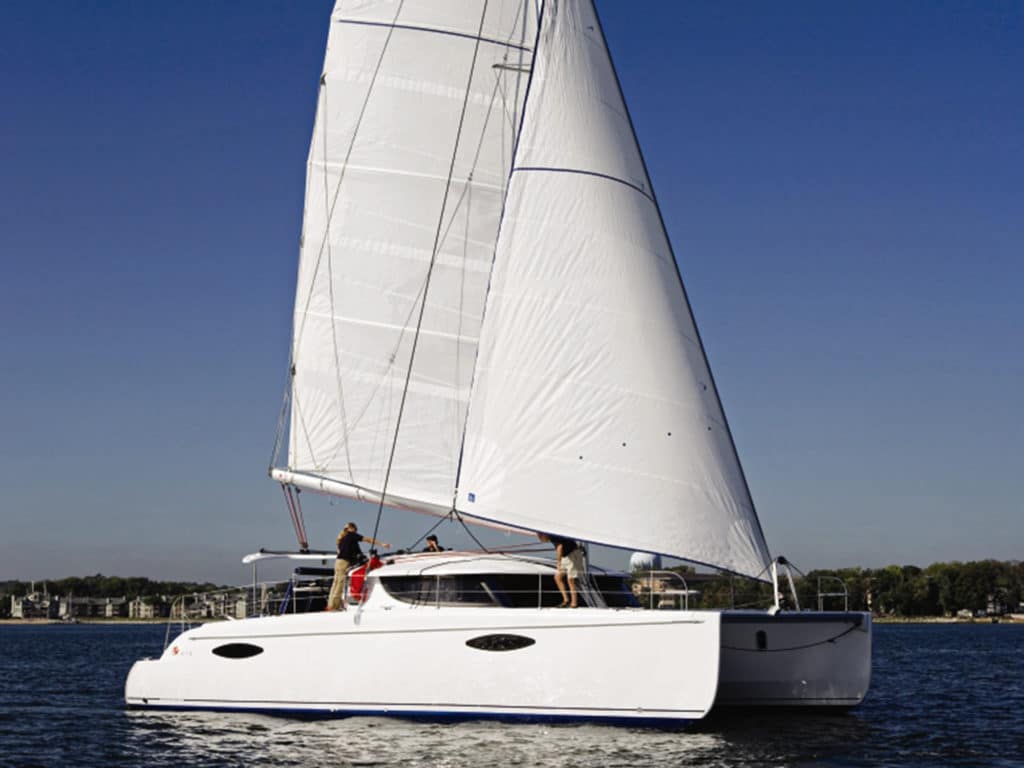
So, you want to get a catamaran , sail off into the sunset, and capture some magic with your lover or family for a few years. You have no ambition to sail around the world or to live aboard forever, but think a one- or two-year sabbatical might be life-changing. You’d like to sail the US East Coast, the Bahamas, the Caribbean, perhaps the Med—or up and down the West Coast and on to Mexico and Central America. You have $300,000 or less to spend and want a catamaran you can sell at the end of the journey without consuming a bottle of Tylenol to blunt the pain.
The good news is that this is quite achievable. The bad news is that there is a vast wave of baby boomers who are all looking for the same thing—and for right around the same price. This makes finding a good deal on a great used catamaran a lot of work, even working with a broker. But, it’s possible. You just need to keep an open mind.
The other good news, which might seem surprising, is that an older catamaran, besides being more affordable, might sail just as well—or even better—than the same-size new cat that will cost considerably more. Yes, the older model might have less room inside and lack the latest condo-on-the-water styling, but it was designed and built before the current trend to supersize the newer generations of multihulls at the expense of sailing performance.
Here’s my advice to the cat hunter on a budget: Don’t get too hung up on the length of the boat. Instead, focus on the spatial and payload requirements you seek and which can be achieved within your budget. And best not get too focused on must-have features—what I jokingly call “surround-sound beds.” Catamaran designs and interiors have gone through massive changes in the past 10 to 20 years, and most older designs simply cannot compete with the new ones in terms of space and high-end amenities.
None of the cool cats I have in mind are over 47 feet. This is not because there aren’t bargain boats out there that are 47 feet and longer, but because any larger multihull that you can buy for $300,000 or less will most assuredly need a significant refit or is either very old or very odd. Buying a fixer-upper is, to my mind, the most dangerous thing a budget-minded consumer can do. It’s just too easy to underestimate the cost of yacht refits and repairs due to the extremely high prices charged in most boatyards.
RELATED: 20 Best Cruising and Sailing Destinations
Nearly any cat you buy over 10 years old is fully depreciated. What we were selling a Lagoon 440 for eight or 10 years ago is nearly the same as what they sell for today. The difference between a good deal and a bad deal is tied solely to a yacht’s condition and refit history. As they joke in private-equity circles, “Any idiot can buy; you deserve congratulations only when you sell.”
So, when your search gets underway, focus on condition—it is far more important than the year, brand or features you might crave. And when you find the cat of your dreams, the best way to remove financial-downside risk is to get a great survey and to choose the newest, smallest cat that will work for your agenda, not the oldest and biggest.
And a word of caution: Your problem will be knowing a good deal from a bad one after the survey is over if you are not well-schooled in pricing. Besides steering you toward potential boats to consider, this is where a broker, working on your behalf, can provide knowledgeable advice. It’s been my experience that this is the point when so many yacht sales come apart: a dispute over the value of a given yacht when the survey results come in. All too commonly we see buyers reject yachts they should have accepted and purchase cats they should have rejected. Remember, a used yacht is a used yacht—not a perfect yacht. A catamaran need not be perfect to remain a perfectly good deal. Here, then, are 10 cool cats to consider in the $300,000-or-less range:
1. Fountaine Pajot Orana 44 (above)
Fountaine Pajot had the misfortune of tooling up this boat just before the global financial crisis, so not that many of them were built between 2007 and 2012. But these were the first of the larger-space charter cats in this size, but not yet so porky that they still could not sail decently. In the three-cabin owner’s version, they designed the living space very nicely; even in the four-cabin version, the aft starboard bed was very well-done.
During this period, Fountaine Pajot had problems with the resin it was using, which led to blistering on the hulls and undersides. Affected models therefore had new bottoms done at approved shipyards throughout the world. Make sure the one you are considering had this done or that it doesn’t show evidence of significant blistering. Honestly it is only cosmetic, but it will impact resale if not repaired. Many consumers think blisters are the end of the world; frankly, they are not.
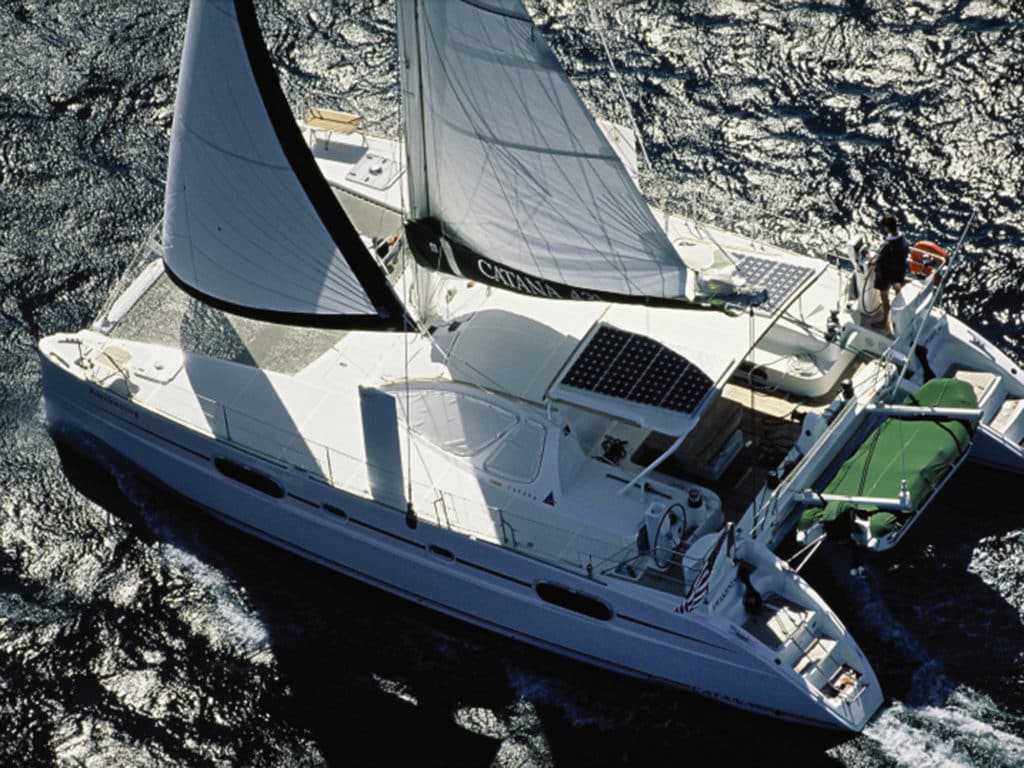
2. Catana 431
Built in France by a long-standing yard, the Catana 431 was always a very viable vessel because it is big enough to go anywhere, but not too large for a competent owner to handle. And because the 431 has good underwing clearance and daggerboards, it sails smartly to windward.
That said, there are a few things to watch for. The primary bulkheads on many of these boats were not tabbed on the outer ends, and over time tended to distort. Often this led, or will lead, to a costly replacement of some bulkheads. So be careful to survey these areas properly.
The 431′s furniture is all foam-cored and handmade, but the banding on the outer edges in some cases slowly starts to peel, which allows moisture to infect the wood veneer. This can create a somewhat unsightly appearance in the cabinets and drawers. It is only a cosmetic issue, but it can make the interior feel a bit worn out.
During the period when the 431 was being built, Catana used a distributive electrical card system, and the boats had several modules, each a zone, to which electricity was run. If one thing in a zone stops working, the only solution is to jury-rig a wire from that nonworking item back to the main breaker panel. Replacing the modules or getting them repaired can be done, but it is getting harder by the year. For this reason, the best 431 is a boat that someone else had rewired at some point along the way.
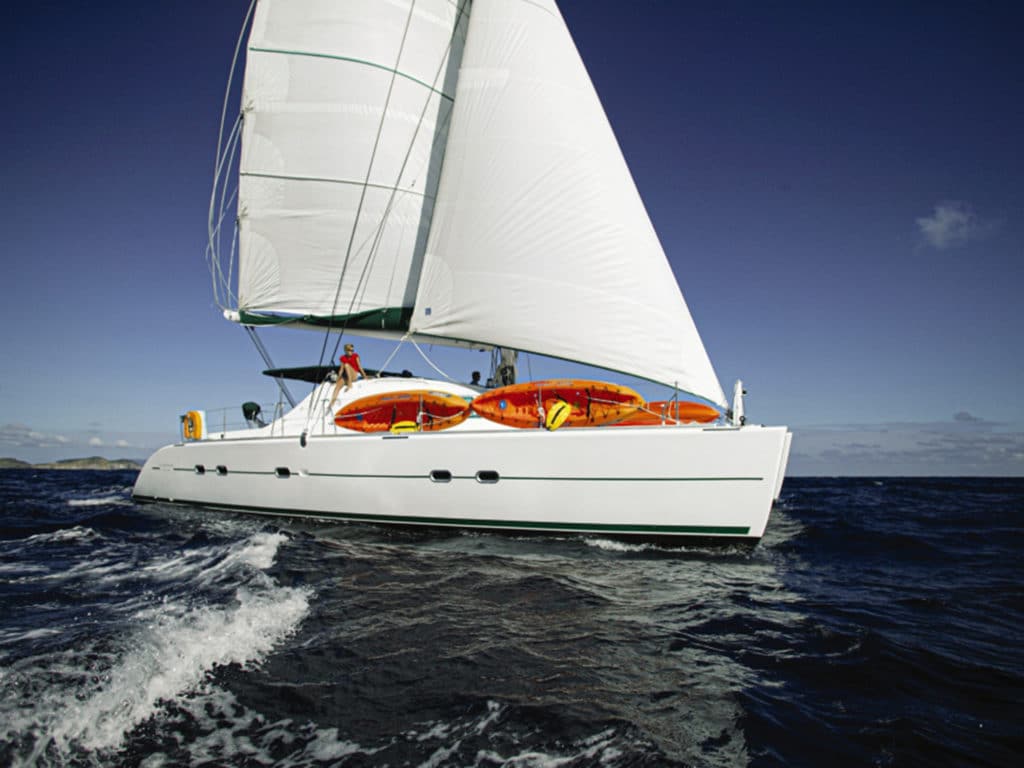
3. Lagoon 470
If you need a larger escape pod, the Lagoon 470 is one of our favorites. This model of older Lagoons was built at CNB’s yard in Bordeaux, France, and the build quality was high. The 470 was the first design to have the more-vertical windows that are a Lagoon signature, and ample saloon headroom. The 470s are also old enough that the hulls were not so supersize that it compromised sailing performance. They have decent underwing clearance, so they are not persistent pounders to windward. Many were built with a galley-down layout, some in galley-up style. You will always pay more for an owner version of this or any model.
The big thing you have to concern yourself with on Lagoons of this vintage is that the hulls and decks are made with a balsa core, so it is not uncommon to find moisture problems, especially around deck fittings or hatches. This can sometimes require rebedding or recoring areas, and this sort of repair, in North America, can be a costly undertaking. Make sure you get good moisture-meter readings near all deck fittings and, of course, on the hulls. Hulls, however, tend less often to have moisture issues because there are few fittings through which water can enter the core. Were that to happen below the waterline, it is a real mess that must be repaired immediately and properly.
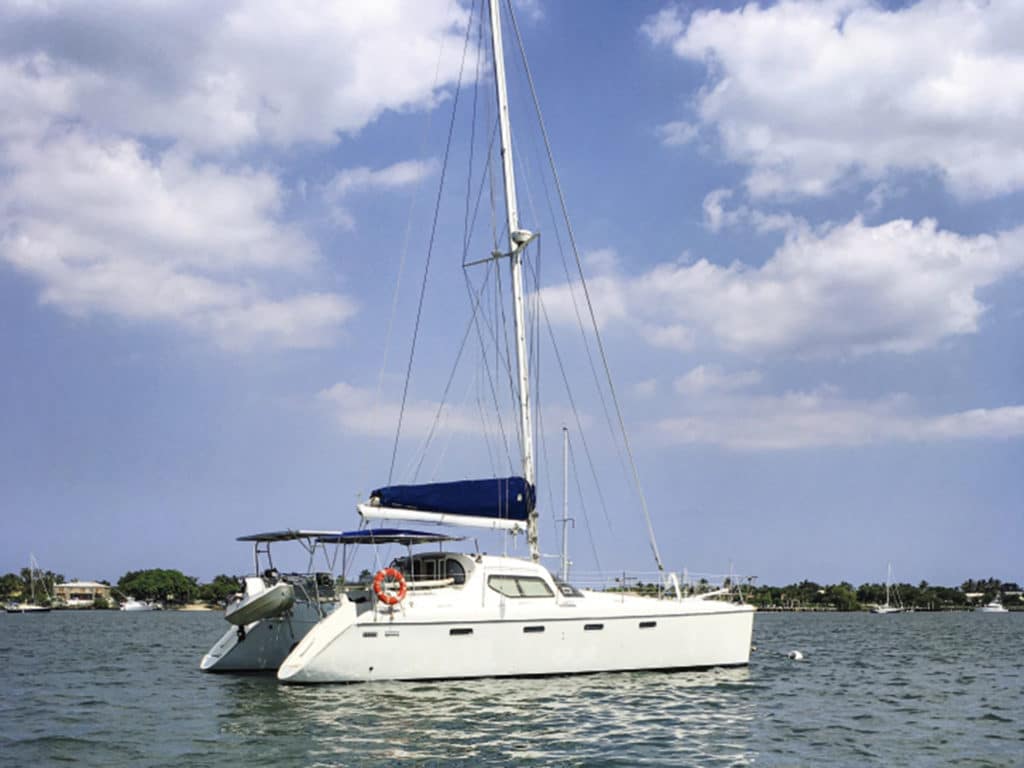
4. Privilège 435
Back when the Privilège 435 was built, Privilège catamarans were constructed by Alliaura Marine in France, and they were truly the Mercedes of the multihull world at that time. While not a performance cat by any means, the 435 was a super-solid yacht, built with great care and the finest components. The 435 is large enough to go anywhere but small enough to handle easily.
The largest negative of this model—and many cats of this vintage—is that the saloon windows slope dramatically, so the interior gets very hot unless the windows are covered most of the time. When they legalize growing pot on catamarans, here’s the perfect greenhouse for it! Seriously, if you should buy a used 435, you really have to get strong sunblocking external UV covers, as well as interior blinds or shades to inhibit heat buildup.
Some of the 435s were laid out with the galley down in one hull, and these days most people want a galley-up arrangement, where cooking and food preparation are done in the saloon. A three-cabin galley-up owner version will be far more sought after and cost more than a four-cabin galley-down version.
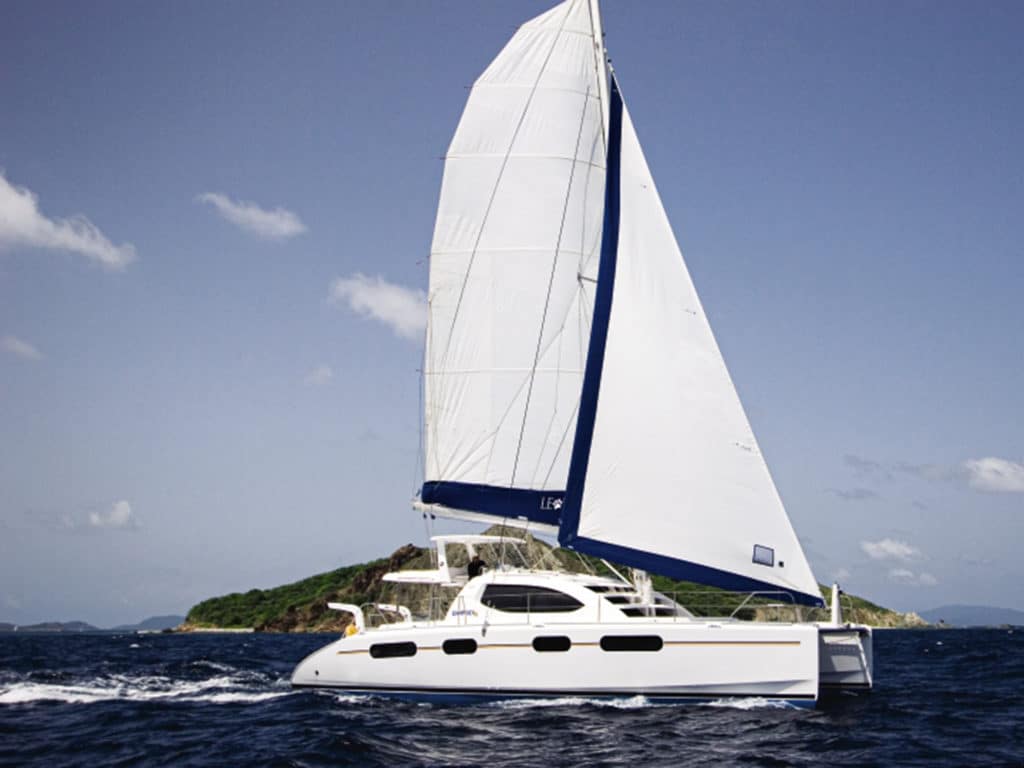
5. Leopard 46
This was the first of the Morrelli & Melvin collaborations with South African builder Robertson and Caine and the charter companies owned at the time by TUI Marine to create a catamaran that could be sold both into charter under the Moorings brand and also privately as a Leopard, so effort was made to design a boat with good sailing performance. Gino Morrelli did a good job creating a lot of underwing clearance, the 46 has a powerful rig, and yet its interior still offers spacious sleeping areas and nice flow from the cockpit to the saloon. These can be bought as ex-Moorings charter boats for less than $300,000 but are more costly in the sought-after Leopard owner version.
Because these are balsa-cored boats, you must inspect deck fittings carefully for moisture incursion. Some of the earlier ones also experienced structural problems on the aft bulkhead and over-door-frame areas between saloon and cockpit. Also, during this period, the windows in the main saloon had a tendency to leak and, when they did, required rebedding or replacement. This was a costly job, so check this out carefully during survey.
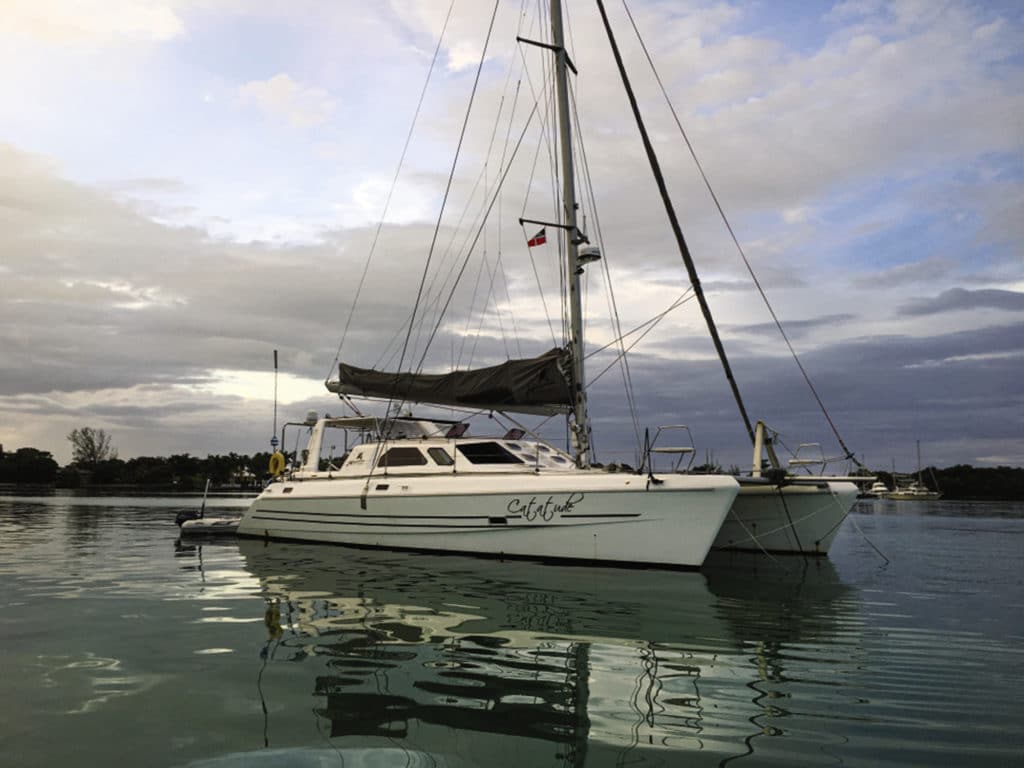
6. St. Francis 44/Knysna 440
If you wish to spend under $250,000, the older Saint Francis 44 and Knysna 440 are worth a look.
Back in 1990, Duncan Lethbridge started St. Francis Catamarans in South Africa with the St. Francis 43. The boat was meant to be a fast, strong bluewater voyager—and it was. The 43 was made with foam core, keeping the structure light, and it was very strongly built, with a powerful rig. The 43 loved to sail. And so too did the St. Francis 44, an updated version of the original.
The boat did have a couple of negatives, however, the first being its sloped windows that built up interior heat. And the boat wasn’t a great fit for tall people, having less than 6-foot-2-inch headroom in the hulls. Also, the engines were installed amidships, which made the boat noisy inside under power. It also made the amidships areas of the hulls too narrow to have centrally located heads and showers, which in turn meant the only layout available was a four-cabin, four-head design. In the forward cabins, the heads and showers had to be far forward; in the aft cabins, the heads and showers were located far aft.
St. Francis sold the tooling for the 44 to Knysna Yachts in 2004, and Knysna raised the headroom in the saloon and moved the engines aft to each stern. The hulls remained fundamentally the same, but the design was improved nicely.
The largest negative of both the Saint Francis 44 and the Knysna 440 is that they have very low underwing clearance. Things can get pretty noisy when pushing against washing-machine seas.
But you cannot have it all and still pay less than $250,000 in a midsize cat; compromises must be made. And these boats do sail quite smartly compared with many in their size range.
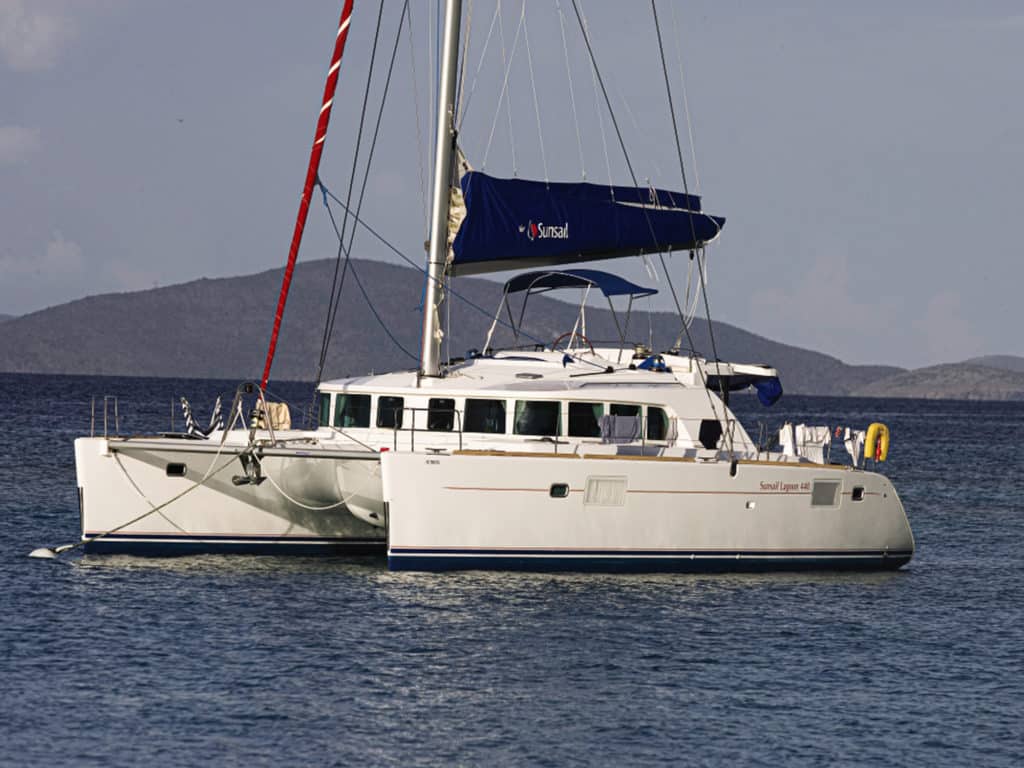
7. Lagoon 440
This was the most popular catamaran ever made, and it started the catamaran flybridge craze, which helped to convert many powerboaters to sailors.
What I like about the 440 is that it is an infinitely better sailer than some of its peers, and has decent underwing clearance, vertical windows, and nice cabins for sleeping and living. While the aft cockpit is rather small, the saloon is quite large.
Flybridges are a bit of a love-hate thing. There is no question that in a cat of this size, the windward performance suffers a bit due to the boom positioned so high off the water. When piloting, the skipper is separated from those on the bridgedeck. Part of the reason flybridges are so popular in charter is that most of the parties take place up there while sailing and at anchor. In private ownership, however, it is seldom that everyone is hanging out on the flybridge during a long passage.
As always with Lagoons, these are balsa-cored boats, so a careful survey is in order. Pay attention also to bulkhead tabbing to make sure they have not separated from the hulls.
Because so many of the 440s were built to go into charter, there are a lot of four-cabin, four-head models for resale. These will sell for considerably less on the brokerage market than a coveted three-cabin, private-owner model.
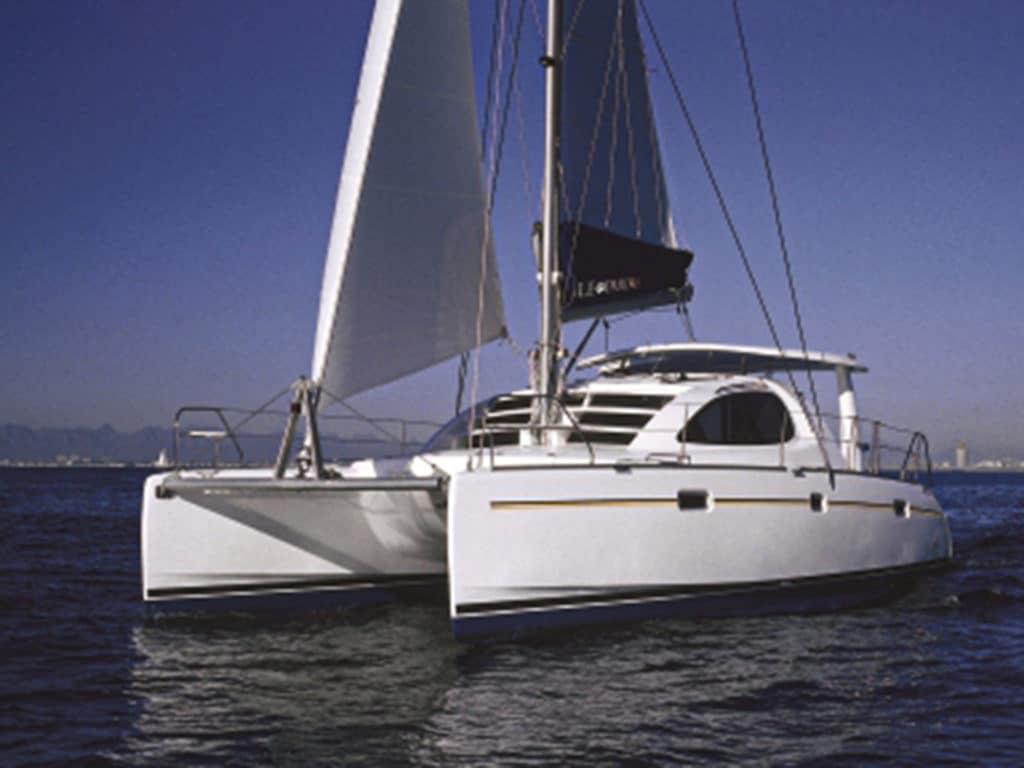
8. Leopard 40
When you get into the 40-foot size range, a four-cabin layout can become pretty cramped and claustrophobic below, but the three-cabin owner version of the Leopard 40 is a very nice pocket cruiser. A Morrelli & Melvin design, the 40 has good underwing clearance and nicely shaped hulls. Not a large cat, per se, and less-suited for significant distance sailing than others because its payload is limited, the 40 is still well-suited for a couple and a child or two for near-coastal and island-hopping action.
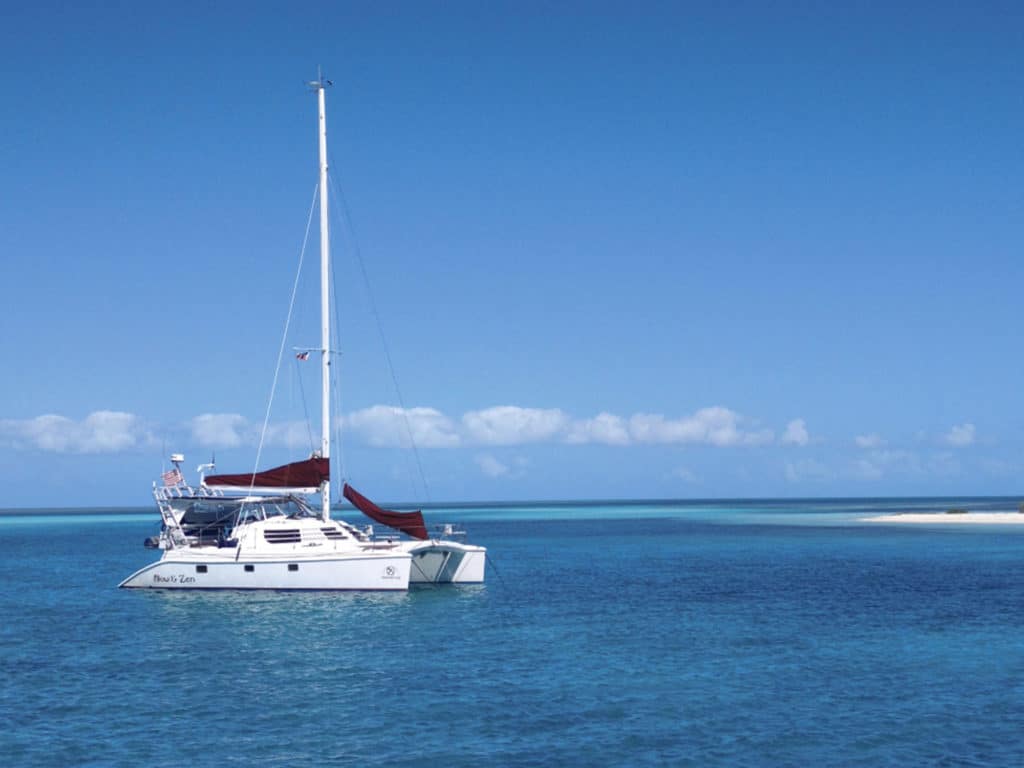
9. Manta 42
If you are searching for a cat in the $200,000 range, the Manta 42s were well-built in Florida, and their electrical systems were very well-done compared with many other multihulls of that era. While many of the features on the boat are quite dated, these Mantas sail very well, and easily, and have been popular with coastal cruisers for two decades.
The largest negative of the Mantas is that people taller than 6 feet will find the saloon headroom right on the edge, and the berths are not especially large. Also, forward visibility from the saloon windows is not particularly panoramic, so the interiors are a bit darker inside than current-generation catamarans.
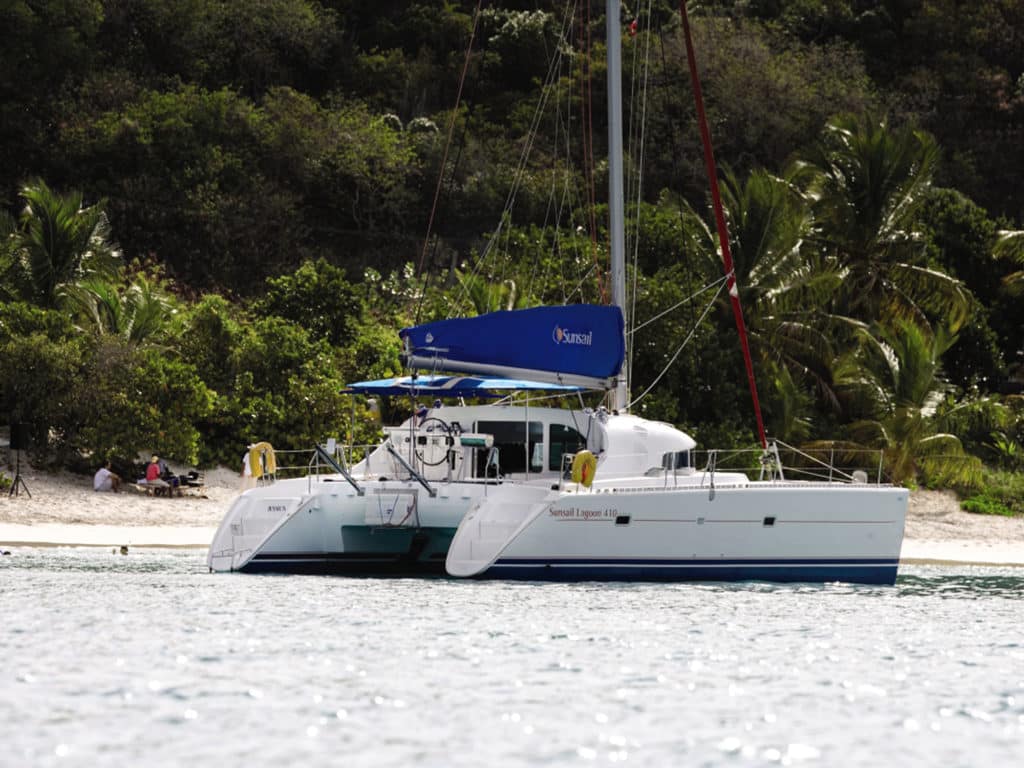
10. Lagoon 410
The Lagoon 410 was quite a popular cat in its prime, and for good reason. It offers lots of visibility thanks to its vertical windows, good headroom for a cat of its size, nice berths, and a workable, though smallish, galley-up design. The 410 has decent underwing clearance, can sail nicely over the waves, and its singlehanded operation is super easy. In the three-cabin owner’s configuration, it’s just a very cool little cat.
As always, a balsa-core boat must be surveyed carefully, especially on deck, for moisture incursion near fittings and hatches. It can be costly to repair rotted core and to rebed deck fittings. But find a dry one, and it should definitely be counted as a contender for a buyer with a limited budget.
Phil Berman is the president of the Multihull Company and the founder of Balance Catamarans. He has managed the sale of more than 900 catamarans.
- More: catamaran , lagoon , leopard , multihulls , print june july 2020 , Sailboats
- More Sailboats
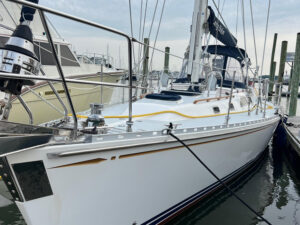
For Sale: 2002 Hylas 46
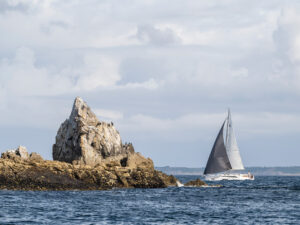
Sailboat Review: Beneteau Oceanis 37.1
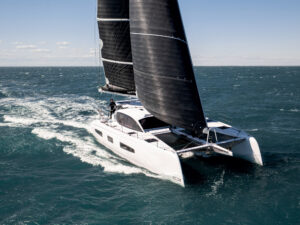
Sailboat Preview: Outremer 52
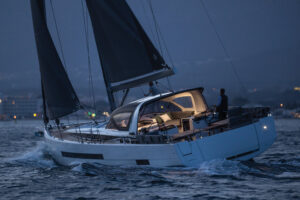
Sailboat Review: Jeanneau Yachts 55
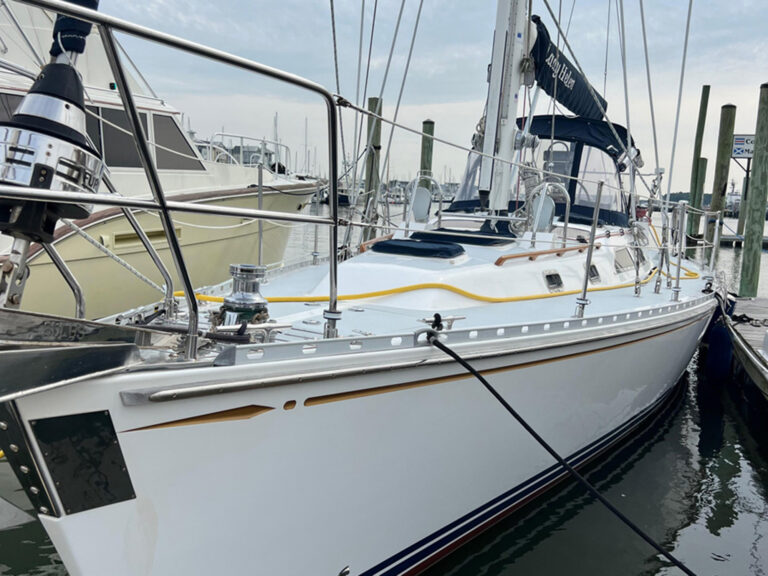
7 Boating Safety Tips for Summer Cruising
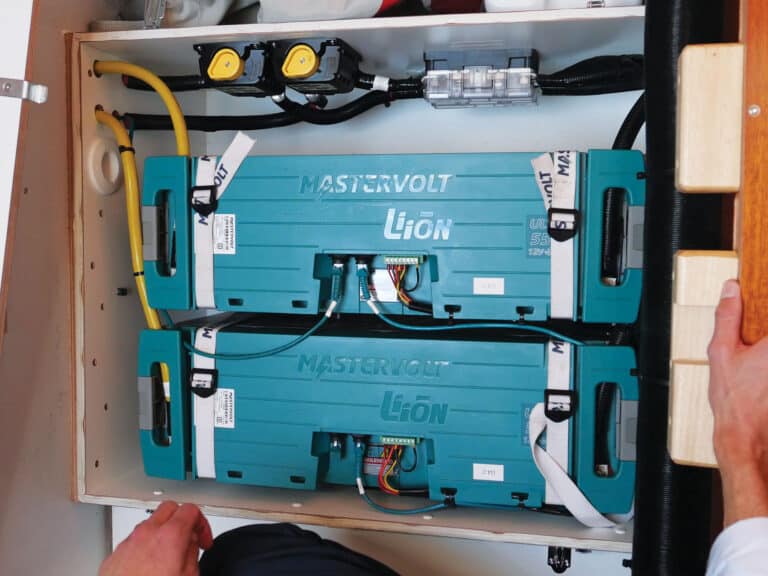
Generators Not Included
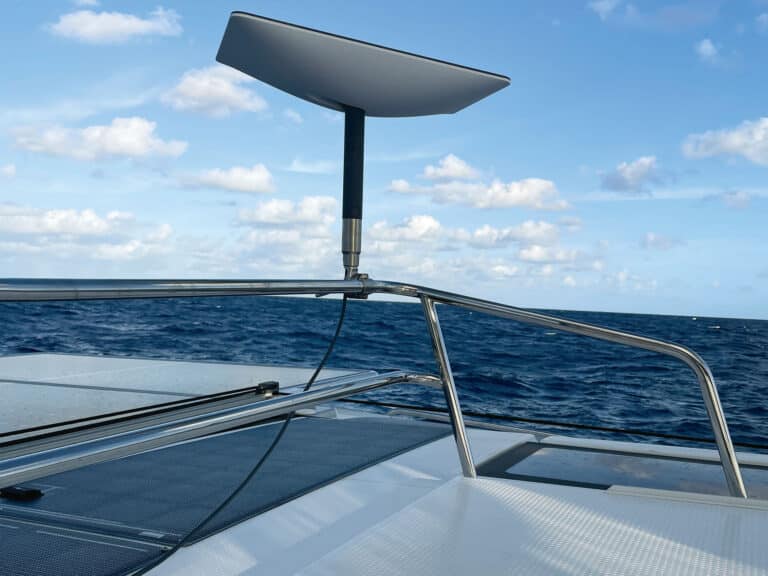
The Days of Dishy McFlatface Have Arrived
- Digital Edition
- Customer Service
- Privacy Policy
- Email Newsletters
- Cruising World
- Sailing World
- Salt Water Sportsman
- Sport Fishing
- Wakeboarding
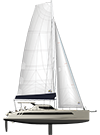
CRUISING CATAMARANS FOR REAL SAILORS
Seawind Catamarans have long been Australia’s most popular cruising catamaran designs. With over 35 years experience in building the highest quality blue water catamarans. As already discovered by our growing family of adventurous and like minded Seawind fans the world over, a Seawind boat could be the ideal sailing catamaran for you and your family!
STATE OF THE ART COMPOSITES
What's in a seawind .
Seawind Catamarans is in continuous development with every new boat model, building on the knowledge and success of previous designs. Every catamaran yacht is the result of hundreds of collective years of multihull experience, and the best construction techniques the world has to offer. Seawind Catamarans uses Resin Infusion Technology to produce a lighter, stronger, and cleaner product. In partnership with High Modulus and DIAB technologies, the complex infusion implementation process was developed using a 3D simulated flow model (pictured here) to ensure that best quality and consistency is achieved with every new Seawind sailboat.
PROVEN RELIABILITY FIRST & FOREMOST
Every Seawind sailing catamaran is built for cruising practicality, but delivered on a platform of fast, performance hulls with a fine bow entry and strong stiff construction. Poise is combined with power in the shape of a relatively powerful sail area, providing a power to weight ratio to set pulses racing. This additional power delivers the speed to bring significantly more destinations within reach, satisfying a modern market which may need to fit “extended” cruising into only a few weeks or months. But in all of the 600 catamaran boats launched, not one has ever suffered a rig failure or have we ever experienced a capsize. Seawind catamaran yachts are built on a track record of success.
ERGONOMIC & PRACTICAL
Seawind Catamarans’ sustained success over so many years is built on key features which are part of our DNA. Huge cockpit doors open to combine the saloon and cockpit – a feature unmatched in the market, and which provide expansive and versatile living space. The new Seawind 1260 enhances this feature further by adding a modular cockpit arrangement. Move chairs and seats to arrange the space as you need it, as circumstances demand. Seat 8 people inside, and another 8 outside. Or bring everyone in and make that a dozen inside or easily clear the cockpit for a long passage. Every Seawind catamaran sailboat provides flexibility and luxury while sacrificing none of the practicality that made previous Seawind Cats models the success they are. Seawind boats also provide unparalleled entertainment space while sacrificing nothing in offshore safety.
PROTECTED SAFE STEERING
Dual helm stations are found on every Seawind Catamarans sailboat, and they offer 360-degree visibility, even on the largest Seawind 1600 model. This allows the skipper to sail safely in crowded harbor conditions, and to keep an eye on the crew when offshore. Large targa tops offer protection from the harsh offshore conditions, both sun and rain, while panoramic opening windows provide ventilation as well as visibility. Seawind Catamarans boats offer the protection of a pilothouse yacht, with the visibility and helming advantages of a sailing catamaran.
INDOOR/ OUTDOOR LIVING
The famous Australian indoor / outdoor, open lifestyle is entrenched in Seawind Catamarans designs, with an unbeatable living area complimented by brilliant natural ventilation, protected cockpit lounge, and social helm seats putting the skipper in control as well as in the conversation. Best of all, you can enjoy what many catamaran sailboats compromise on… visibility – for the skipper and crew, with 360 degree views from the helm and saloon seats all within the protection of the fiberglass coachouse and targa top.
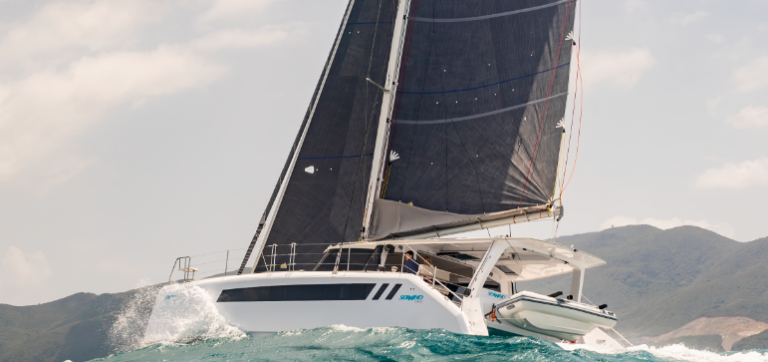
Seawind 1370 Hull 1 Test Report by Skipper & Thailand Customer Service Manager, Phil Harper.

Seawind Catamarans to open Production Facility and European Service Center in Izmir, Turkey.
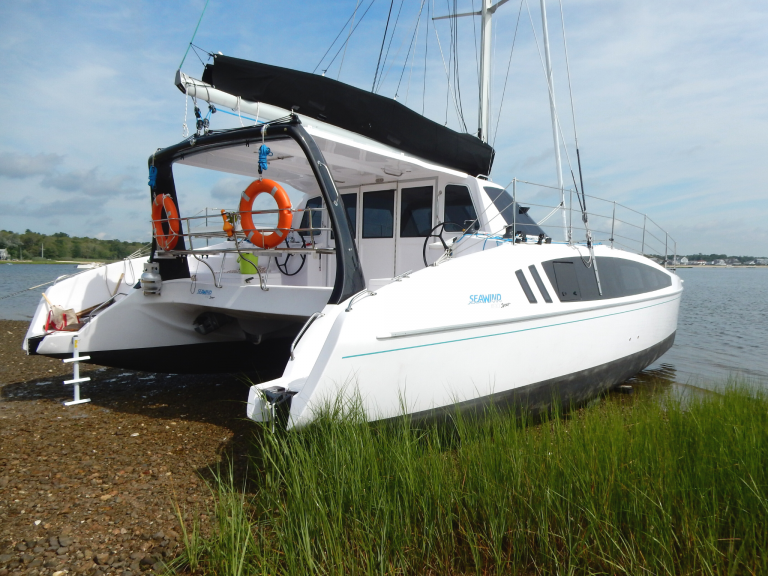
Beachability: Mini-keels or fixed rudders
- Seawind 1370 Hull 1 Test Report
- New Production Facility and European Service Center in Izmir, Turkey.
- Seawind 1600 Reviewed by Pacific Yachting
- Seawind Blog
- Charter A Seawind
- Find A Dealer
- Français ( French )
Tel +84 28 3873 3630
Sales Enquiry:
Customer Service Enquiry:
© 2024 Seawind Group Holdings, Pty Ltd. All rights reserved.
Privacy Policy

Best Liveaboard Bluewater Catamarans

Last Updated by
Daniel Wade
August 30, 2022
Catamarans are known for seaworthiness, but what sets a run-of-the-mill recreational cat from a full-blown liveaboard blue water cruiser?
The best production blue water cruising catamarans are the Manta 42, the Lagoon 42, the Leopard 45, the Lagoon 450, and the Prout 45. These vessels have excellent living accommodations and great sea keeping abilities.
In this article, we’ll cover five of the best liveaboard cruising catamarans, along with what sets them apart from similar vessels. Additionally, we’ll go over what to look for in a catamaran that functions both as a home and an offshore adventure cruiser.
We sourced the specifications listed in this article directly from boat design guides and the manufacturers themselves.
Table of contents
Characteristics of Liveaboard Cruising Catamarans
Generally speaking, blue water catamarans that are suitable for offshore cruising and living aboard are between 40 and 50 feet in length. Some well-designed catamarans between 25 and 39 feet in length can also be used.
A good liveaboard cruising catamaran should have adequate berthing and galley facilities, along with an enclosed cockpit. Catamarans without enclosed cockpits, especially smaller vessels, aren’t spacious enough in the hull to accommodate good liveaboard facilities.
As far as cruising is concerned, the best Bluewater catamarans are designed for durability and seaworthiness. A vessel’s sea keeping abilities rely on more than just smoothness and speed. These vessels should be water-tight in key locations, positively buoyant, and equipped with all the right extras.
Factors that Increase Catamaran Seaworthiness
There are several additions that manufacturers commonly include with sea-going blue water catamarans. These include water-tight hatches, radar units, a backup generator, and a berth close to the cockpit.
The latter is particularly important, as the captain and crew need to be able to grab the controls in the event of a nighttime emergency.
Other add-ons, such as automatic winches and controls, are extremely beneficial to blue water catamarans. These devices allow the sails to be controlled remotely without the crew needing to walk on deck.
Cruising Catamaran vs. Bluewater Catamaran
Fundamentally, cruising catamarans and ‘blue water’ catamarans are one and the same. When companies classify a catamaran as a ‘cruising’ catamaran, they usually do so because of a few notable design features.
These include cruising accommodations such as large-capacity water tanks, large fuel tanks, onboard power supplies (like a generator and a battery bank; sometimes solar panels), and long-distance communication systems. Radar is another perk, and it’s available on most cruising catamarans.
Best sea-going Liveaboard Catamarans
We searched the market, researched specifications, and listened to the owner’s opinions to find the best sea-going catamarans on the market.
These vessels are also spacious and comfortable enough to live aboard, both at sea on extended voyages and in a marina. Here are our top picks.
1. Manta 42
The Manta 42 is a well-known and popular cruising catamaran with a reputation for seaworthiness and exceptional comfort for its size. This vessel, while on the smaller end for cruising catamarans, is quite seaworthy and handles well in all conditions.
The Manta 42 is powerful—it has a large sail area for its size, which gives it incredible speed in both low and high wind conditions.
The Manta 42 has an unconventional design feature that makes it stronger than the competition—and technically, more seaworthy than many larger and fancier catamarans. The feature we’re referring to is the Manta 42’s fixed crossbeam, which is stronger than typical designs.
The Manta 42’s interior is really well-designed and ideal for living aboard. The hulls feature large berthing areas, and the center cockpit area features a full-size marine galley and sitting areas. This vessel is popular with families, as there’s plenty of room for parents and one or two kids.
2. Lagoon 42
Here’s another 42-foot cruising catamaran with exceptional seaworthiness, shallow draft, and spacious accommodations. The Lagoon 42 is a modern and advanced sailing catamaran with numerous cruising features, such as a self-tacking jib and a flybridge.
This model has extensive sleeping capacity. Standard versions can sleep up to 12 adults, which is much more than many catamarans in the 40 to 45-foot range. The vessel also features four separate heads, which ensures privacy for guests and family members.
This vessel is designed for comfort, and therefore it's a bit beefier than some slimmer and less spacious models. It’s a heavy boat with a 25-foot beam, and it has excellent sea keeping abilities.
The primary drawback of the design is that its size and hull shape limits speed. But this isn’t as big of an issue on long voyages, and it’s still much faster than an equivalently-sized monohull.
3. Leopard 45
This premium catamaran is a bit larger and more comfortable than the vessels we’ve discussed so far. It’s a luxury catamaran with everything you’d expect for the half-million-dollar price point.
This vessel shines on the open water where it can let out its sails and stretch its legs. The vessel is lightning fast in the right conditions, and it has an astounding 700-gallon fuel capacity for when the wind isn’t blowing. You can sail it, motor it along, or do both at the same time for even greater speed.
From the factory, the Leopard 45 sleeps around 12 adults at its maximum capacity or four couples in separate staterooms—each with its own bathroom and shower. The center cockpit is also quite spacious, and the vessel can be navigated from the flybridge above the central living area.
4. Lagoon 450
Here’s another 45-foot catamaran that comes from one of the world’s most respected catamaran builders. Lagoon, which is currently producing several catamaran models, is known for its high-quality material choice and construction.
The Lagoon 450 is a flybridge sailing catamaran. Its design is based on the best-selling Lagoon 440—a slightly smaller model that proved itself over years of use and countless miles sailed between owners. And though it’s only 45 feet long, this catamaran is massive both inside and out.
The vessel is fast and nimble, and it has excellent sea keeping qualities. Below decks, the surprisingly wide hulls have room for full-size staterooms both fore and aft. But what the Lagoon 450 is known for is its deck space. There’s a ton of room on the decks for hanging out, living activities, and entertaining guests.
The center cockpit of the Lagoon 450 is like something out of a luxury condo. The styling is impetuous and airy, and there’s more than enough room to prepare a full meal for ten people or more. The settee can double as a sea cabin, with more than enough room for a small crew.
5. Prout 45
Here’s a sleek and fast catamaran that’s a superior choice for cruising and living aboard. The Prout 45 debuted in the 1990s and was a huge success.
Impressively, over 2,000 individual Prout 45 cruising cats were eventually produced. That’s a lot for a production catamaran—especially a large 45-foot model with a hefty price tag.
This sea-going catamaran has unconventional features, including pointed monohull-like bows and a nearly flush cockpit.
The interior arrangement of the vessel is unconventional as well, but many owners eventually learn to prefer it. For example, oddities include a galley in one of the hulls instead of the center, where catamarans often keep such facilities.
This is a fast cruising catamaran with a very shallow draft. Three feet six inches of draft, to be precise.
This means that the Prout 45 is ideal for sailing in shallow locations, such as around tropical coral reefs and in areas known for sandbars. The draft of this vessel is much closer in depth to that of a 20 to 25-foot displacement monohull than to a full-size 45-foot catamaran.
Related Articles
I've personally had thousands of questions about sailing and sailboats over the years. As I learn and experience sailing, and the community, I share the answers that work and make sense to me, here on Life of Sailing.
by this author
Best Sailboats
Most Recent

What Does "Sailing By The Lee" Mean?
October 3, 2023

The Best Sailing Schools And Programs: Reviews & Ratings
September 26, 2023
Important Legal Info
Lifeofsailing.com is a participant in the Amazon Services LLC Associates Program, an affiliate advertising program designed to provide a means for sites to earn advertising fees by advertising and linking to Amazon. This site also participates in other affiliate programs and is compensated for referring traffic and business to these companies.

Similar Posts

Affordable Sailboats You Can Build at Home
September 13, 2023

Best Small Sailboats With Standing Headroom
December 28, 2023

Best Bluewater Sailboats Under $50K
Popular posts.

Best Liveaboard Catamaran Sailboats

Can a Novice Sail Around the World?
Elizabeth O'Malley
June 15, 2022

4 Best Electric Outboard Motors

How Long Did It Take The Vikings To Sail To England?

10 Best Sailboat Brands (And Why)
December 20, 2023

7 Best Places To Liveaboard A Sailboat
Get the best sailing content.
Top Rated Posts
Lifeofsailing.com is a participant in the Amazon Services LLC Associates Program, an affiliate advertising program designed to provide a means for sites to earn advertising fees by advertising and linking to Amazon. This site also participates in other affiliate programs and is compensated for referring traffic and business to these companies. (866) 342-SAIL
© 2024 Life of Sailing Email: [email protected] Address: 11816 Inwood Rd #3024 Dallas, TX 75244 Disclaimer Privacy Policy
Yachting World
- Digital Edition

Eagle Class 53: The foiling cruiser inspired by the America’s Cup
- Matthew Sheahan
- August 6, 2019
Is this the future of sailing? The Eagle Class 53 is a wingmasted cruising catamaran designed to fly on T-foils
Not everything that flies is destined to scorch around an America’s Cup course. The future for sailing hydrofoils is surely about more than just racing. At least, that was the view of one owner who, having witnessed the America’s Cup foiling catamarans, saw a big opportunity.
“I’ve worked as a skipper for yacht owner Donald Sussman for 16 years,” says Tommy Gonzalez. “When he saw the foiling Cup boats he knew that this was what he wanted to have a go at. He is not interested in racing himself, he wanted to go cruising, but cruising on foils. He saw what had been created and believed that this had practical potential. Put simply he said: ‘I want one and I want to be the first.’”
As well as being a professional skipper, Gonzalez is the president of Fast Forward Composites, a Rhode Island-based composite building facility where the Eagle Class 53 was constructed. Understandably, the road to creating such an ambitious cruiser was never going to be straightforward. So the plan was structured around several key elements and stages, starting with an efficient and easily managed wingmast.

The hybrid solid wing and soft sail configuration means the rotating rig can be reefed. The entire solid wing can be rotated through 360° ensuring the rig can always be fully depowered – important for docking and close quarters manoeuvring
Of those two criteria, efficiency is easy to satisfy – wingmasts are by definition more efficient. It is the practicalities of handling them that usually causes problems. Reducing sail in breezy conditions and leaving the wing up at the dock are two of the biggest issues.
The solution on the Eagle Class 53 was to create a composite wingmast where 50% of the area is a solid D-section and the trailing 50% a soft sail that can be raised, lowered and reefed. Interestingly, it is a similar concept to that of the next generation of 75ft foiling monohull Cup boats, currently under development. “The rig is a little lighter than a conventional mast and sail set up, and significantly easier to handle,” explains Gonzalez.
“Because the sail can be raised or lowered we can reef the main, or even just sail with the solid section. The mainsheet loads are around 40% less than a conventional rig and because the sail can turn 360° we can let the wingmast fully rotate, which makes life simple when you’re docking. You just let it feather.
“In addition, because we have a part soft sail, which we have developed with North Sails, we can create twist which allows us to de-power the top of the sail, so we have plenty of control over this wing and the advantages that go with it.”
Article continues below…

Could the wonderfully weird Inflated Wing Sail make sailing easier?
As the mist rose off the water’s surface in the picturesque harbour of Morges on the north bank of Lake…

Baltic 142: The superyacht bringing foiling technology into cruising
The Baltic 142 may not be using the hydrofoils popularised by the America’s Cup, but her 29ft 6in long (9m)…
The next stage was to work towards foiling. To do this the team decided to create a cat that had C-section daggerboards that would help reduce displacement at speed but not lift the boat entirely. Getting used to controlling the power and feeling the behaviour of the boat through various wind ranges and sea states would provide a solid understanding of the boat’s characteristics.
“Once we have got used to the way the boat handles, the next stage will be to fit T-foil rudders which will take us onto the next level,” continues Gonzalez. “With these we will be able to get used to the software system, the instrument displays and the feel and the control of that part of the programme without taking the boat to full flight.
“That will allow us to get her up on her toes like a ballerina and keep her there so we understand what she feels like before she flies. “After that, in the spring next year, we’ll remove the C-foils, put on the T-foil daggerboards with their elevators, and move on to full foiling.”

The wingmast has a solid D-section and trailing soft sail
The proposed T-foil daggerboards will be angled out which makes the overall platform slightly wider, which in turn makes for more stable and efficient foils. And while improving the efficiency of the lifting surfaces, the outward bend in the daggerboards will also help to generate more righting moment, and hence achieve greater stability.
The control system itself will be a form of fly-by-wire system that will allow autonomous flight to ensure that the boat sails within safe operating limits. “If you have some of the gods of sailing aboard you will be able to override the controls to some degree, but under normal circumstances the control system will automatically de-power and lower the boat back into the water when the speed gets to 35 knots,” he explains.
So far the project has gone well. After the boat was launched earlier this year she cruised in the Caribbean during the regatta season before heading north back to Bristol, Rhode Island. “We’ve been very pleased with how well the boat sails and how easy she is to handle,” said Gonzalez.
“When we’re on delivery trips we have just three aboard. Aside from myself, the other two crew are not highly qualified professional sailors and yet we are looking at boat speeds of around 15-18 knots upwind and then 22 knots off the wind.
“We have also been through a squall of 35 knots where we were sailing with just the D-section of the wing mast which was easy to control by feathering the wing. When we get to the foiling stage we anticipate that we will be able to fly in around 10 knots true.”

The Eagle Class 53’s roots lie firmly with the foiling America’s Cup catamarans. Even in displacement mode she’s an exhilarating ride. The goal is to achieve fully foiling performance
It is still early days for a project that Gonzalez describes as being “crawling before walking, before running and ultimately sprinting”, once the hydrofoils are fitted.
Yet during the development process it has become clear that there are others who are interested in the 53-footer, whether it foils or not. So, while the next big goal is to work towards building a 75-80ft long distance cruiser, currently called the 8X, interest in the Eagle Class 53 has been sufficient for the company to tool up for a limited production run.
“We have created carbon tooling for the 53 and are looking to build around seven of them,” said Gonzalez. “For the 8X, we are hoping to build three with the first being available during the winter of 2021-22.”
Gonzalez is a realist when it comes to the future. “As we all know, foiling has been around for a long time in military and public transportation, so we need to set an example to insurance companies and the likes that we are foiling safely and encourage others to follow. But the time has come. This is part of the evolution of our sport.”
Specification
LOA: 16.50m (54ft 2in) LWL: 16.08m (52ft 9in) Beam: 8.50m (27ft 11in) Draught: 0.41m-3.05m (1ft 4in-10ft 0in) Displacement (light ship): 6,000kg (13,228lb) Displacement (max load): 7,540kg (16,623lb)

Cruise, Play, Stay
With all the comforts of home, arrowcat brings back the 20' center console, a unique design, understand why.
Enjoy your boat year-round and stay warm and dry during cooler weather or overnight trips, while also having a comfortable and private space to retreat for whenever you need a break. Here are a few reasons why an ArrowCat power cat is an excellent boat to consider.
A Catamaran Boat
Catamarans have two hulls, which provide more stability in the water. They are less likely to roll or pitch, which means they offer a more comfortable ride, especially in rough conditions and for people who are prone to seasickness.
Power catamarans are typically more fuel-efficient than monohull boats of the same size. It requires less energy and yields more performance per HP. The two hulls create little to no drag or resistance to get on plane, resulting in greater fuel economy. Allowing for longer journeys with fewer refueling stops.
Power catamarans have a shallow draft which means they can navigate in diverse cruising grounds – beaches, islands, rivers, channels, and coastal areas with limited water depth.
An Express Cruiser
Cabin boats are designed with comfortable sleeping quarters and living spaces. They feature a sleeping space with a bed, a galley with a stove, sink, and refrigerator, and a head with a shower and toilet.
Cabin boats provide protection from the elements, such as wind, sun, and rain. This allows for comfortable cruising in a variety of weather conditions, as well as providing a haven during storms
Express cruisers are designed for efficient and fast navigation, offering higher speeds compared to traditional cruising boats. They usually have powerful engines that enable them to cover long distances quickly, making them ideal for day trips or weekend getaways.
Powered By Outboard Motors
Outboard motors can provide excellent performance and speed. They can often reach higher speeds than inboard motors of the same horsepower.
Outboard motors have a simple and standard design and are relatively easy to install, they do not require additional components such as a transmission, propeller shaft, couplings, and struts, that inboard engines do. They are easily assessable and cost less to maintain than inboard motors because they are mounted outside at the rear of the boat.
Outboard motors are often designed with features that make them easy to maneuver. For example, they can be tilted or rotated to provide precise control and handling in tight spaces and shallower waters.

ArrowCat Power Catamarans
The outboard powered express cruising catamaran.
ArrowCat Express Cruisers are designed from the ground up to maximize comfort, performance, durability, and fuel efficiency, making them a better choice for both in-shore and off-shore family cruising. We build our powercats with your safety and enjoyment in mind, designing our signature interior cabin so that you’re not limited by the outside elements, but rather have the ability to enjoy your vessel at any given time, regardless of weather or location. Superior construction, optimized performance, economy, and safety can be found in every ArrowCat we make.
Explore Our 32' & 42' Signature Cabin Models
Perfect for offshore and inshore cruising, long distance and overnight trips, cold off seasons and hot boating seasons, and much more. The ArrowCat 32-foot and 42-foot models provide an exciting and versatile experience on the water. Explore to see which one could best suit your boating lifestyle.

ArrowCat 320 Coupe
Express Cruiser Catamaran Hull Planing Hull Design Twin Outboard Motors Standard Layout: 2 Cabins/ 1 Wet Head Trailerable Optional Tower Upgrade LOA: 31′ 2″/9.50 meters Beam: 10’/3.05 meters Draft: 20″/.508 meters
ArrowCat 420 Coupe
Express Cruiser Yacht Catamaran Hull Planing Hull Design Twin Outboard Motors Standard Layout: 2 Cabins/ 1 Full Head LOA: 41′ 9″/12.73 meters Beam: 14′ 9″/4.5 meters Draft: 18″/.46 meters
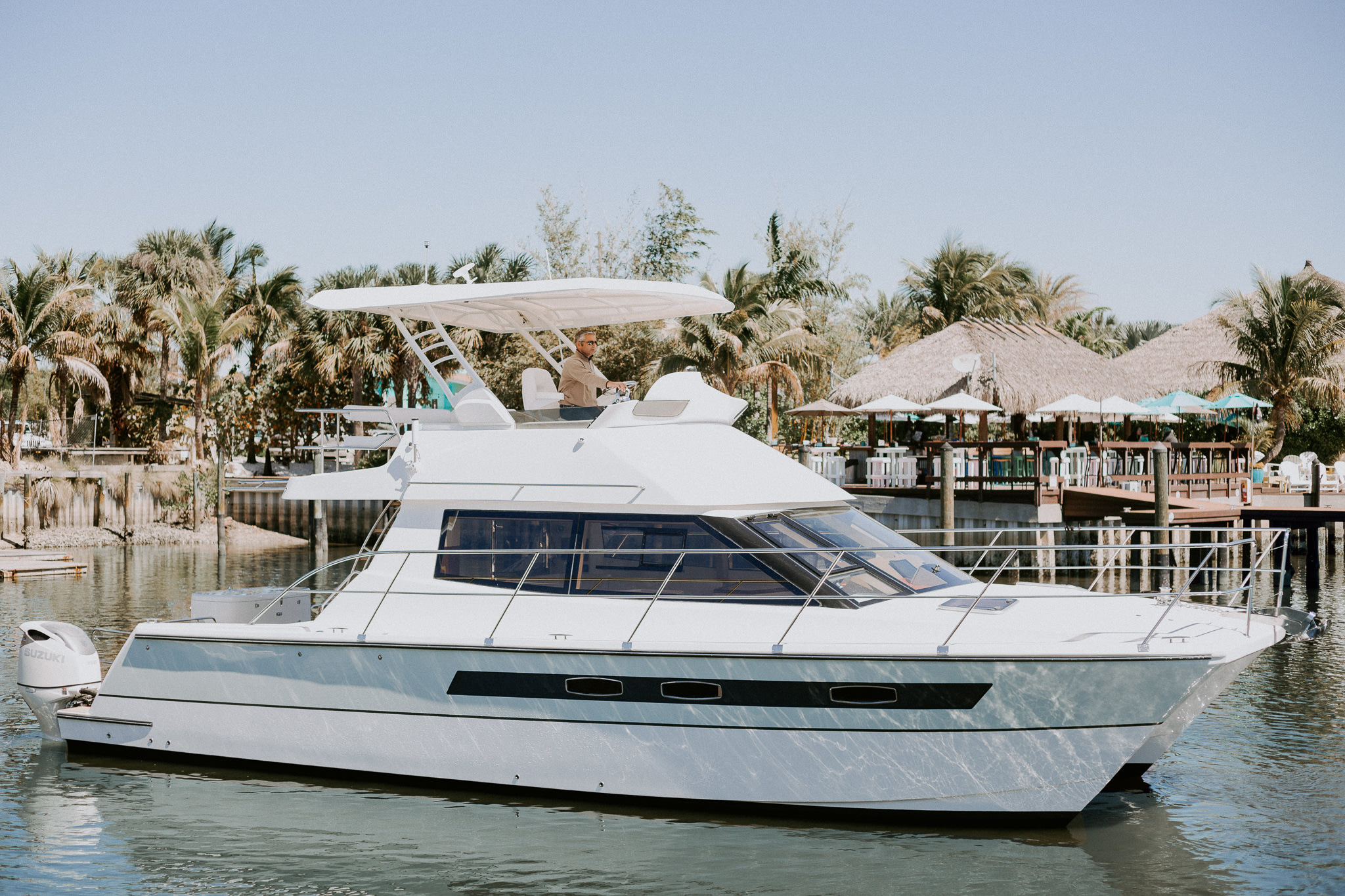
ArrowCat 420 Flybridge
Express Cruiser Yacht Catamaran Hull Planing Hull Design Twin Outboard Motors Standard Layout: 2 Cabins/ 1 Full Head LOA: 41′ 9″/12.78 meters Beam: 14′ 9″/4.5 meters Draft: 20″/.5 meters
Smooth, Fast, And Stable Ride
Talk To One Of Our Sales Experts To Schedule A Sea Trial & Experience The Feel For Yourself
Privacy Policy

The Ultimate Guide to Choosing Between a Sailboat or Catamaran for Your Sailing Adventures
C hoosing between a sailboat and a catamaran for your sailing adventures is a significant decision that depends on various factors, including your sailing preferences, experience level, budget, and intended use. Here's an ultimate guide to help you make an informed decision:
1. Sailing Experience:
- Sailboats: Typically require more skill and experience to handle, especially in adverse weather conditions. Ideal for sailors who enjoy the traditional feel of sailing and are willing to invest time in learning and mastering the art.
- Catamarans: Easier to handle, making them suitable for beginners. The dual-hull design provides stability, reducing the learning curve for those new to sailing.
2. Space and Comfort:
- Sailboats: Generally have a narrower beam and less living space. However, some sailboats may offer comfortable cabins and amenities.
- Catamarans: Wider beam creates more living space. Catamarans often have multiple cabins, spacious saloons, and expansive deck areas, providing a more comfortable living experience.
3. Stability:
- Sailboats: Monohulls can heel (lean) while sailing, which some sailors enjoy for the thrill but can be discomforting for others.
- Catamarans: Greater stability due to the dual hulls, providing a more level sailing experience. Reduced heeling makes catamarans suitable for those prone to seasickness.
4. Performance:
- Sailboats: Known for their upwind performance and ability to sail close to the wind. Some sailors appreciate the challenge of optimizing sail trim for efficiency.
- Catamarans: Faster on a reach and downwind due to their wide beam. However, they may not point as high into the wind as monohulls.
- Sailboats: Typically have a deeper draft, limiting access to shallow anchorages and requiring deeper marina berths.
- Catamarans: Shallow draft allows access to shallower waters and secluded anchorages, providing more flexibility in cruising destinations.
- Sailboats: Generally more affordable upfront, with a wide range of options available to fit different budgets.
- Catamarans: Often more expensive upfront due to their size and design. However, maintenance costs may be comparable or even lower in some cases.
7. Mooring and Docking:
- Sailboats: Easier to find slips and moorings in marinas designed for monohulls.
- Catamarans: Require wider slips and may have limited availability in certain marinas, especially in crowded anchorages.
8. Intended Use:
- Sailboats: Ideal for traditional sailors who enjoy the art of sailing, racing enthusiasts, or those on a tighter budget.
- Catamarans: Suited for those prioritizing comfort, stability, and spacious living areas, especially for long-term cruising and chartering.
9. Resale Value:
- Sailboats: Generally have a more established resale market, with a wider range of buyers.
- Catamarans: Growing in popularity, and well-maintained catamarans often retain their value.
10. Personal Preference:
- Consider your personal preferences, the type of sailing you plan to do, and the kind of lifestyle you want aboard your vessel.
In conclusion, both sailboats and catamarans have their advantages and disadvantages. Your decision should be based on your individual preferences, experience level, budget, and intended use. If possible, charter both types of vessels to experience firsthand how they handle and to help make a more informed decision based on your own preferences and needs.
The post The Ultimate Guide to Choosing Between a Sailboat or Catamaran for Your Sailing Adventures appeared first on Things That Make People Go Aww .

- Outremer 45
- Outremer 4X
- Outremer 4.zero
- Outremer 52
- Outremer 55
- Outremer 51
- Outremer 5X
- All the Outremer Fleet
- Personalized support
- Blue Water Sailing Seminars
- Our concept
- The Outremer team
- Our commitments
- Construction principles
- Our catamaran services
- After-sales customer service & Quality control
- Offshore Connected Catamaran Maintenance
- Concierge Services
- Our owners’ stories
- FAQ – Outremer catamarans

- Brokerage: used catamarans for sale
- Privacy Policy
- Legal Notice
- Grand Large Yatching
Setting off on a catamaran with the best sailing weather
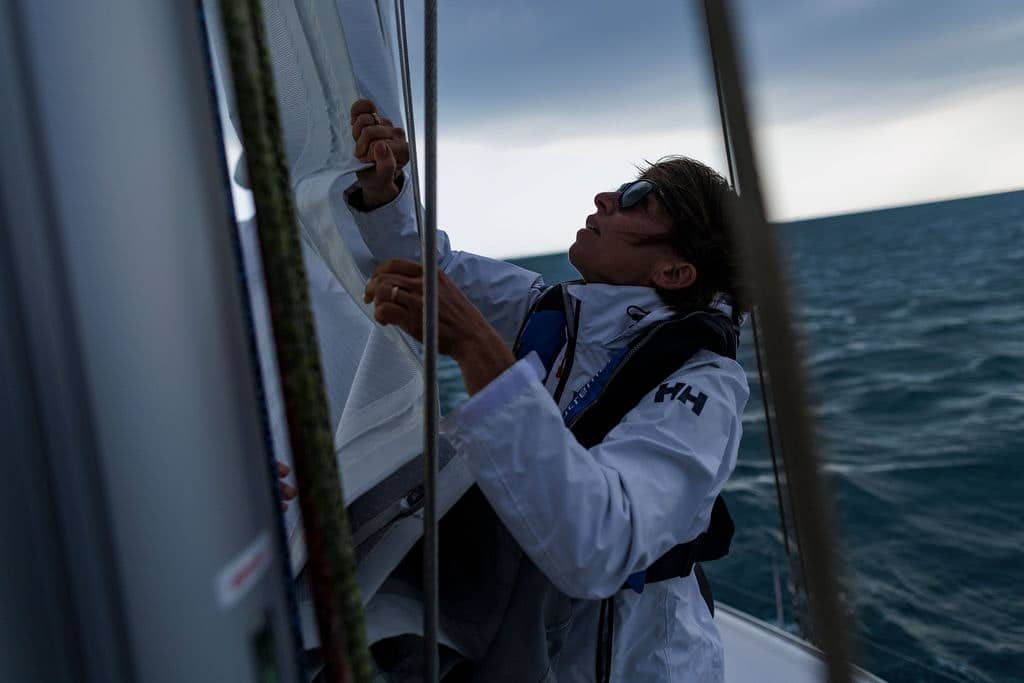
When you’re getting ready to set off on a sailing trip, it’s vital to find out about the seasons and weather phenomena in your chosen sailing area. Even before choosing your cruising destination or travel itinerary, or even selecting your boat!
Good reasons to pay attention to the weather and the seasons, popular routes to take advantage of pleasant conditions, weather training and the need, sometimes, to revise your sailing programme… In this article, Outremer takes a look at the subject.
The importance of studying the weather situation beforehand
Preparing your catamaran cruise must inevitably take into account the seasons and weather trends. You will plan your adventure, geographically and in time, to avoid, as far as possible, the main sources of inconvenience linked to the weather. Forget areas that are frequented by cyclones at certain times of the year, areas where the seas may be too rough or too choppy, passages where the currents are too strong, places where there is no wind…
If you’re planning a major voyage such as a round-the-world sail, it probably won’t be possible to avoid all the complicated situations. On the other hand, by being well prepared and thinking ahead, you’ll have every chance of making the most of your sailing, and getting out on the water in complete safety.
In order to visit certain ports of call, you may need to meet a certain number of conditions. Depending on your planned cruising itinerary, you may need to arrive at slack water for a particular passage, on a rising or falling tide. Sometimes, an anchorage area may only be accessible during periods of high tide, or in a particular wind sector. Find out as early as possible whether or not there are any stopovers of this type in your schedule: planning access conditions will ensure that you don’t miss the opportunity to visit these destinations if it arises.
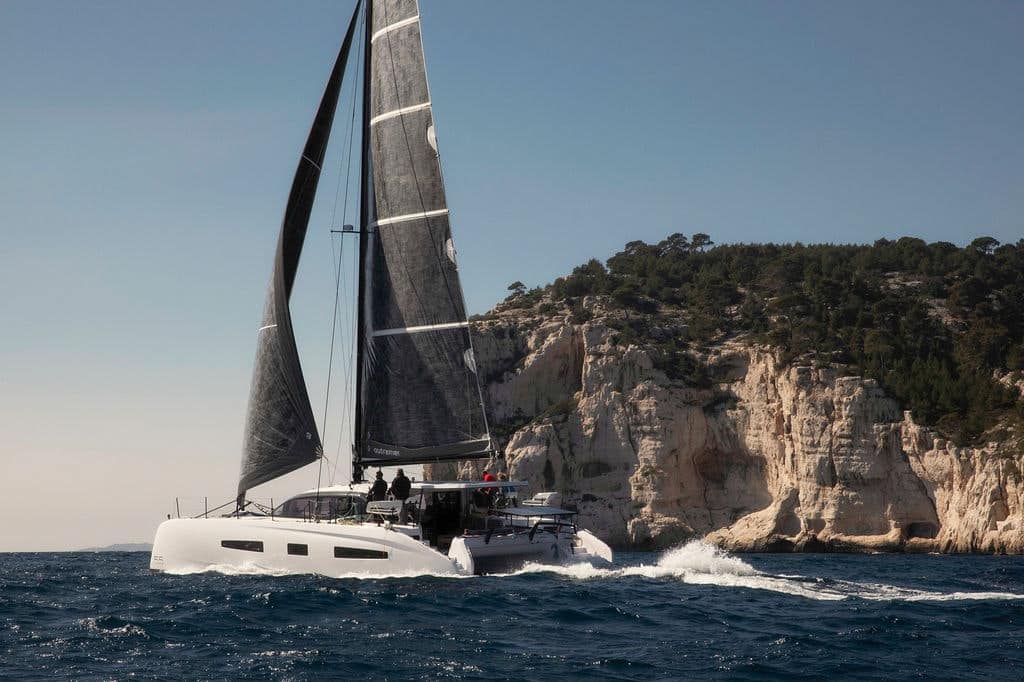
Discover the world under sail by following the seasons
Most sailors follow the same ‘main routes’ around the world, often at the same times. In this way, they hope to have the best sailing weather and to enjoy calm sailing. This is the case, for example, for crews who opt to sail downwind along the Trade Winds route :
Their voyage generally begins in the last quarter of the year. Departing from France or Europe, they reach the Atlantic Ocean: they make a first crossing to the Canaries, then a second to the Caribbean Sea – ideally before the end of January. The sailors cross the Panama Canal towards the Pacific Ocean in May and June, then set course for French Polynesia. After a few months there, they continue their journey westwards, ideally leaving before the end of April for New Caledonia, New Zealand or Australia.
Then it’s time to head for Indonesia and the Indian Ocean, where they will be sailing during the summer and autumn. The circumnavigation ends with a passage to Cape Town in South Africa, ideally at the end of the year. Sailors then cross the South Atlantic from west to east in January or February, followed by a return transatlantic crossing, often via the Azores, between March and June.
Crews setting sail from Europe to South America head for Brazil between November and January, then round Cape Horn during the first two months of the year.
Avoiding tropical depressions, tropical storms and cyclones
Depending on the type of sailing you are planning, you will be interested in the different cyclone seasons around the world. Depending on whether you want to visit destinations in the northern or southern hemispheres, you will take different precautions: the cyclone season in the French West Indies covers the months of June, July, August, September and October, while in the southern hemisphere it runs from the beginning of November to the end of April. If you want to sail in Réunion, Mayotte or the South Pacific – in New Caledonia, Wallis and Futuna or French Polynesia, for example – it’s best to choose the period from May to October.
Of course, these are only guidelines: a major weather event can occur at any time, so you should always keep up to date with the weather forecasts.
Catamaran maintenance and different equipment for different regions
If you’re planning a long cruise in a specific region of the world, you should also think about the maintenance of your catamaran. It won’t be the same if you’re planning to sail in a temperate zone, a tropical zone or the polar regions. For the catamaran’s crew, too, the cruising area will determine the equipment you need to take on board.
Even if your chosen sailing period and your future destination seem to protect you from bad weather, don’t forget to have the right equipment for bad conditions: when sailing, events can change quickly!
Read also: Safe sailing – Nikki Henderson
Weather training, a must for catamaran cruising
When you’re cruising on a catamaran, whether you’re leaving for a short or long time, coasting close to the coast or sailing in the middle of the ocean, it’s always essential to find out about the weather forecast. Consulting several reliable sources should enable the skipper to make informed decisions, for the safety of both crew and vessel.
Before setting off on a long sailing trip, we strongly recommend that you take a marine weather training course : with knowledge of the weather phenomena likely to occur in different parts of the globe and a perfect understanding of the data you will receive, you will have all the keys in hand to make the right choices and sail without being stressed.
Sailing programme and weather: always the need to adapt
Finally, when sailing, you must always bear in mind that weather changes can be sudden and significant.
When cruising on a catamaran, it’s important to remain flexible: when planning your cruising itinerary, always think about alternative routes or a different schedule so that, if necessary, you can adapt to events.
Even though it may be disappointing to have to shorten the length of a stopover or to have to abandon a scheduled stopover, the safety of the crew must be the priority in all circumstances.
Continue navigation
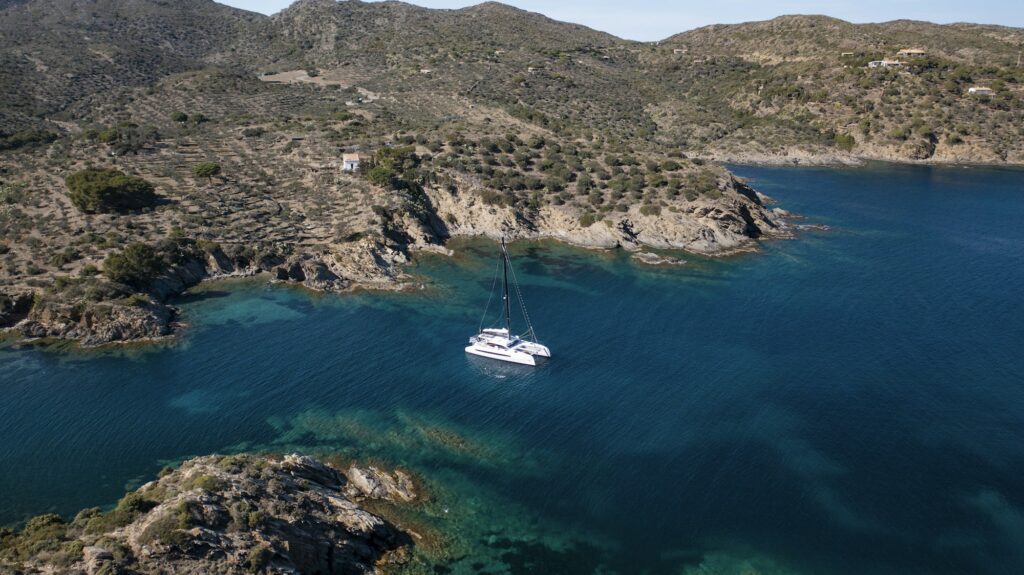
Catamaran VS Monohull: what should you choose to sail around the world?
Sailing around the world is a dream come true: you discover the world to the rhythm of the wind and the stopovers, exploring new destinations every day as you sail. If you’re just starting to read this article, you’re probably nurturing this project. Are you planning to sail around the globe? Then the choice of ship for your next voyage is crucial.
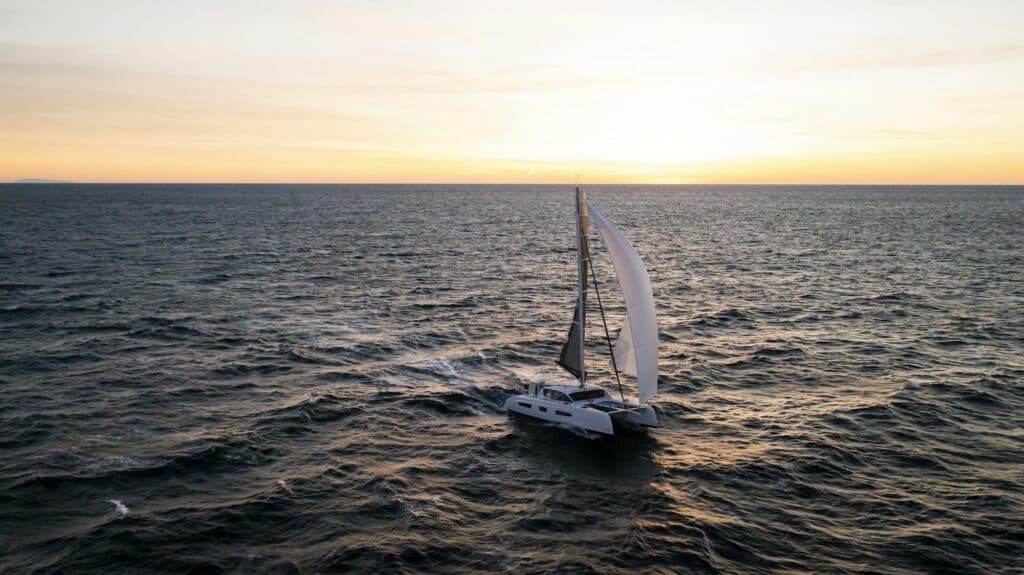
The Importance of Defining Success
In the Autumn of 2023, I ran a ‘Webinars for Women’ mini-series on transatlantic preparations. The first session was titled: “How to approach transatlantic preparation.” As I zoomed out of the nitty gritty of canned food recipes, spare parts inventories, and preventative sail repair and took a broader look at the framework for a successful crossing, I homed in on what I think the first and most important step is: defining your goal.

Sailing in the Bahamas : unforgettable stopovers
The Bahamas Islands are a dream destination to explore under sail! In the heart of the Caribbean Sea, the archipelago offers the chance to enjoy sailing through splendid scenery, pleasant places to stop off and memorable activities. In this article, the Outremer team tells you what they consider to be the essential stages of a catamaran cruise in the Bahamas.

The global authority in superyachting
- NEWSLETTERS
- Yachts Home
- The Superyacht Directory
- Yacht Reports
- Brokerage News
- The largest yachts in the world
- The Register
- Yacht Advice
- Yacht Design
- 12m to 24m yachts
- Monaco Yacht Show
- Builder Directory
- Designer Directory
- Interior Design Directory
- Naval Architect Directory
- Yachts for sale home
- Motor yachts
- Sailing yachts
- Explorer yachts
- Classic yachts
- Sale Broker Directory
- Charter Home
- Yachts for Charter
- Charter Destinations
- Charter Broker Directory
- Destinations Home
- Mediterranean
- South Pacific
- Rest of the World
- Boat Life Home
- Owners' Experiences
- Interiors Suppliers
- Owners' Club
- Captains' Club
- BOAT Showcase
- Boat Presents
- Events Home
- World Superyacht Awards
- Superyacht Design Festival
- Design and Innovation Awards
- Young Designer of the Year Award
- Artistry and Craft Awards
- Explorer Yachts Summit
- Ocean Talks
- The Ocean Awards
- BOAT Connect
- Between the bays
- Golf Invitational
- Boat Pro Home
- Superyacht Insight
- Global Order Book
- Premium Content
- Product Features
- Testimonials
- Pricing Plan
- Tenders & Equipment

Second Gunboat 80 launched and named Agave
The second unit in the 24.7-metre Gunboat 80 series has been launched and named Agave . She now joins her sistership Highland Fling XVIII on the water, who sports a custom red exterior .
The cruising catamaran is said to "apply the latest race boat technology for the sailing lifestyle". This includes a wave-piercing bow and a coachroof-stepped mast, positioned further aft than previous Gunboat designs for a more balanced sail plan and centre of gravity.
Engineering is courtesy of VPLP Design in collaboration with the French shipyard. The model's "ultra-sleek look" is owed to Christophe Chedal Angaly whose design features a low profile, wraparound cabin top windows and long topside windows.
Agave has a custom spars package by Lorima that features a 31-metre rotating mast, a box boom with outriggers, a longeron and a crossbeam constructed in ultralight prepreg carbon fibre – as are the superstructure and bulkheads.
While interiors are undisclosed, the model is known for its spacious saloon and "bright and airy" cockpit, which houses accommodation for up to eight. This includes an owner's cabin with the potential for a separate office or lounge.
Agave is equipped with t-foils, said to reduce pitching "by around 30 per cent" in the Caribbean while increasing average speeds. She also benefits from upgraded rigging and deck hardware throughout, including titanium fittings.
More about this yacht
More stories, most popular, from our partners, sponsored listings.
THE BEST Tyumen Boat Rides & Cruises
Boat rides & cruises in tyumen.
- Boat Rentals
- 5.0 of 5 bubbles
- Good for Kids
- Good for Big Groups
- Adventurous
- Budget-friendly
- Good for a Rainy Day
- Hidden Gems
- Good for Couples
- Honeymoon spot
- Good for Adrenaline Seekers
- Things to do ranked using Tripadvisor data including reviews, ratings, photos, and popularity.

2. Teplokhod-Tyumen'
- Bahasa Indonesia
- Slovenščina
- Science & Tech
- Russian Kitchen
The bourgeois charm of Siberia's oil capital

If you’re driving west across Russia from the Pacific Ocean, the first thing that you notice upon entering the city of Tyumen is the McDonalds. Tyumen has long been one of the only Siberian cities with a McDonalds restaurant. Although the fast-food giant has plans to open locations in nearby Novosibirsk and other regional cities, Siberia still contains one of the longest distances on earth outside of Africa where you can remain on a major highway and not see a McDonalds. Until you reach Tyumen, that is.
A stop in Tyumen provides an interesting glimpse into how modern Russia’s oil revenue has influenced Siberia’s oldest Russian city. Tyumen is a great stopover point on the Trans-Siberian Railroad and a short ride from Yekaterinburg (five hours) or Tobolsk (four hours).
In the 16th century, Russia started expanding eastward into parts of Central Asia ruled by the Tatars, an Islamic people who still live thoughout Russia. A band of Cossacks wrested control of Tyumen from the Tatars in 1580. Six years later, Russians established a fort in Tyumen on the Tura River.
For centuries, Tyumen vied with the nearby city of Tobolsk—once the official capital of Siberia—for the prestige of the region’s most important city. Tyumen won in the end, when the Trans-Siberian Railroad bypassed Tobolsk and was routed through this now oil-rich city.
Tyumen played an important role in Russian history during times of war. At the beginning of the Russian Civil War, the Bolshevik Red Army slowly pushed the White Army, commanded by Admiral Alexander Kolchak, into Siberia. Kolchak and his anti-Bolshevik forces holed up in Tyumen until the Red Army overtook them in January of 1918.
During the Second World War, many Russian industries were moved away from the front to Siberian cities. Tyumen had already become an industrial capital during the early Soviet era, and the city became an ideal spot to relocate Russia’s western factories. As Nazi forces approached Russia in 1941, the embalmed body of Vladimir Lenin was sent from the Lenin Mausoleum in Moscow’s Red Square by train to the Tyumen State Agricultural Academy for safekeeping. In 1945, Lenin’s body was shipped back to Moscow.
Some of the factories relocated to Tyumen during wartime remained in the city. The discovery of oil in the region catapulted Siberia’s oldest Russian settlement to further prosperity. Modern Tyumen is a vibrant city with a number of universities and a revamped center well-suited for exploration by foot.
Start your walking tour around central Tyumen on Ulitsa Respubliki. The city’s main drag has fine pedestrian walkways and leads wanderers past an impressive collection of tsarist-era buildings that recall Tyumen’s importance in the beginning of Russia’s colonization of Siberia.
From the southeastern end of Ul. Respubliki, head north toward the Tura River and take a brief side trip onto Ul. Ordzhonikidze to visit the Fine Arts Museum (47 Ul. Ordzhonikidze) which houses exhibits of classical Russian and Soviet art as well as traditional bone carving and works produced by the native people who live in the far north of Tyumen Oblast.
Back on Ul. Respubliki, you’ll soon see the city’s requisite Lenin statue by the local government buildings. A block away, opposite Lenin, is Tyumen’s city park, a delightful place to walk or hop on one of its amusement rides.
Most Siberian cities developed under the watchful eyes of the atheist Soviet regime and churches are usually not Siberia’s strongpoint. But this isn’t true in four-centuries-old Tyumen. Strolling up Ul. Respubliki, you’ll soon come to the Church of the Saviour (41 Ul. Lenina) and the Znamensky Cathedral (13 Ul. Semakova). Each of these stunning Baroque-influenced churches are located right off Ul. Respubliki and were built in the late 18th century.
Tyumen is also famous for its historic wooden houses. Heading further up Ul. Respubliki, stop to wander around some of the side streets and snap photos of these ornate wooden structures which provide a glimpse back in time. Near the Tura River, you’ll pass a civil war monument in remembrance of the Tyumen natives who died fighting the White Army and the Tyumen State Agricultural Academy (7 Ul. Respubliki) an impressive building in its own right where Lenin was stored during the Second World War.
Near the end of Ul. Respubliki, take a walk over the Tura River on the Lover’s Bridge, a suspension bridge open to foot traffic only that has become one of Tyumen’s iconic sights. The other side of the river is a great place to see more of Tyumen’s signature wooden houses as well as take in the churches scattered around the city center.
Save the best for last and visit the Trinity Monastery (10 Ul. Kommunisticheskaya) at the end of Ul. Respubliki. A white wall surrounds the monastery, giving it the appearance of a mini-kremlin, and the golden onion domes of the 18th century churches within should not be missed.
Although navigating Tyumen is straightforward enough, the St. Petersburg-based travel company OSTWEST can arrange a city tour in Tyumen and the surrounding countryside.
All rights reserved by Rossiyskaya Gazeta.
to our newsletter!
Get the week's best stories straight to your inbox
This website uses cookies. Click here to find out more.
Top Things to Do in Tyumen, Russia - Tyumen Must-See Attractions
Things to do in tyumen, explore popular experiences, top attractions in tyumen.

Other Top Attractions around Tyumen
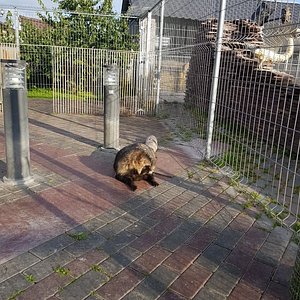
What travellers are saying

- Itineraries
- Dates & Prices
- Compartments
- Call us +61 3 9500 0444
- Write us [email protected]

- COUNTRY Russia
- POPULATION 600,000
- LANGUAGES Russian
- TIMEZONE UTC +5
- NOTABLE LANDMARKS Trinity Monastery; Voznesensko Georgievskiy Church
- Getting Around
- Sightseeing
Tyumen, the first Russian settlement in Siberia, lies 2,500km (1,600 mi) east of Moscow and behind the Ural Mountains. The Tyumen Oblast (region) has seen significant economic growth over the past twenty years, fuelled by the discovery and exploitation of significant oil fields.
Tyumen is also an educational centre, with more than forty thousand students.
Originally Tyumen was called Chimgi-Tura and its origins probably lay with the merchants from the ancient trade centres of Samarkand and Bukhara, who needed Siberian rivers to transport their goods to northern markets. For a long time Chimgi-Tura was the capital of Tyumen Khanate, which was a part of the Mongol Golden Horde Empire. With time Chimgi-Tura was renamed Tyumen, a Mongol word meaning “Ten thousand people.”
Russian Tyumen was established in 1586, when the first military mission sponsored by the Tsar and led by Ermak, mainly to respond frequent attacks of Khan Kuchum, seized the town. It then remained a quiet provincial Siberian city up until the 1960s. Most of its inhabitants lived in wooden houses along the Tura and Tyumenka rivers, for which it became known as the “capital of villages.”
Being a major transportation point to Eastern Siberia and the Russian Far East, Tyumen has experienced all major historical events in Russia. It has seen the Decembrists on their way to exile in Irkutsk, Tsar Nicholas II and his family to their final destination of Ekaterinburg, Revolution turmoil, Civil War, bloody uprisings against the new Bolshevik food policy ( prodrazverstka ), Gulag prisoners, and more. Many famous people were born or studied in Tyumen. Among them is the famous writer M. M. Prishvin. His essays about nature are filled with harmony and the art of words.
One resident was the most controversial figure in Russian history – Grigory Rasputin. His house can be visited in the village of Pokrovskoe, near Tyumen. It is believed that “the devil monk” was born sometime between 1864 and 1872.
Rasputin was an impoverished, drunken, dirty and foul-mouthed man. Even so, people claim that he had great powers. Many said that he was a healer and also a prophet. During his twenties, Rasputin supposedly became a holy man after a long religious conversation with one of his superiors. He lived off the charity of people who admired his asceticism. It is said that one time Rasputin accurately predicted a three month drought. This Siberian mystic arrived in St Petersburg in 1911 and within a few years had become one of the most influential men in government circles.
Tyumen is a city for walking, a city of contrasts. There are two main streets in the centre: Republics and Lenin. Amongst wooden houses and old churches you will see the modern glass buildings of the World Trade Centre and the Law Department of Tyumen State University as well as Soviet style neighbourhoods with multi-storey apartment buildings.
Optional Sightseeing
The historic city of Tobolsk, Siberia’s former capital, displays considerable charm to reward a short detour from Tyumen. The sights include the white-walled 18th-century Kremlin, incorporating the 17th century St Sofia Cathedral, and a weatherbeaten old town described by some as ‘wonderfully dilapidated’.
Winter in Tyumen
The winters are cold in Tyumen and outlying regions. However, they have one attraction that helps to cope with the winter, being open air hot springs. Thousands of people gather there, both locals and visitors from as far as Yekaterinburg and Moscow. this is truly a way to experience the contrast of the cold Siberian winter (-20℃ plus or minus) with the hot spring water (55℃).
It can be fun to change to your swimwear in the car and then dash to the water (100 m) from the parking area. Just taking a few steps out of the water means the water residue on your body turns into solid ice instantly. Good therapeutic skin pore treatment, we are told.

RELATED PLACES

Yekaterinburg

IMAGES
VIDEO
COMMENTS
Gemini 105M Courtesy of Gemini Catamarans. Pioneering catamaran sailor, builder and designer Tony Smith launched the first of his 33-foot Gemini 105M's (10.5 meters = 33′) in 1993, and soon after found a ready and willing stream of sailors enamored of the boat's compact size, affordable price tag, and such innovations as the nifty lifting rudder and transom steps.
Sailing catamarans can be outfitted with high-tech navigation and radar systems, fish finders, auxiliary power outlets, generators, and premium rigging systems for better sailing. ... These features make them exceptionally well-suited for an array of activities including overnight cruising and day sailing. Among our present listings, catamaran ...
Gunboat 62. gunboat_catamarans. An original performance catamaran cruiser from the iconic Gunboat manufacturer, the Gunboat 62 has truly cemented its place as one of the best catamaran sailboats to ever grace the oceans. Honestly speaking, this cat-inspired a whole range of other incredible boats including HH66 Catamaran and the Balance 526.
The Outremer 4x is a stable and comfortable high-speeding cruising catamaran that performs ocean crossings and confronts any weather with remarkable ease. Named the European Boat of the Year in 2017, this 48-foot (14.6 m) bluewater cruiser sails faster than wind speed and attains maximum cruising speeds of 20 knots.. The 4x is an upgrade of the extremely popular Outremer 45, thus retaining ...
Based on the successful Nautitech 46 Open sailing catamaran, the new Nautitech 47 Power redefines the aesthetic, as well as practical parameters of today's power multihulls.The dynamic Nautitech 47 Power benefits from the same streamlined design as the sailing version. The semi-displacement load-carrying hulls give the Nautitech 47 Power performance advantages over other power catamarans ...
A winning balance, it turns out, with the Balance 482 securing its position as the Best Performance Cruiser for 2022. More: balance catamarans, Boat of the Year, Boat of the Year 2022, catamaran, Kinetic Catamarans, print 2022 jan, Sailboats, seawind catamarans. With a powerful, versatile sail plan—as well as light, solid construction and go ...
Experts in carbon fiber construction, we offer a five year hull warranty and we expect our boats to be sailing the world's oceans for 50+ years. HH Catamarans' award winning designs are built to exacting specifications using the most advanced construction methods in the industry. We deliver semi-custom cruising yachts tailored to each owner ...
For this reason, the best 431 is a boat that someone else had rewired at some point along the way. Lagoon 470 Billy Black. 3. Lagoon 470. If you need a larger escape pod, the Lagoon 470 is one of our favorites. This model of older Lagoons was built at CNB's yard in Bordeaux, France, and the build quality was high.
Find Sail Catamaran boats for sale in United States. Offering the best selection of boats to choose from.
Seawind Catamarans have long been Australia's most popular cruising catamaran designs. With over 35 years experience in building the highest quality blue water catamarans. As already discovered by our growing family of adventurous and like minded Seawind fans the world over, a Seawind boat could be the ideal sailing catamaran for you and your ...
Ideal for overnight cruising and day sailing these Catamaran boats vary in length from 27ft to 80ft and can carry 4 to 50 passengers. There are a wide range of Catamaran boats for sale from popular brands like Fountaine Pajot, Lagoon and Leopard with 490 new and 1,445 used and an average price of $569,229 with boats ranging from as little as ...
Leopard Cruising Catamarans Once known for sailing catamarans, today Leopard's line of power catamarans garners the headlines. Photo via Leopard Catamarans. Leopard is a catamaran brand that's been around longer than many, having launched its first 45 back in 1997.
The best production blue water cruising catamarans are the Manta 42, the Lagoon 42, the Leopard 45, the Lagoon 450, and the Prout 45. ... The Lagoon 42 is a modern and advanced sailing catamaran with numerous cruising features, such as a self-tacking jib and a flybridge. This model has extensive sleeping capacity. Standard versions can sleep up ...
Outremer 51/55. When you think of multihulls designed for bluewater cruising, Outremer will likely be one of the first names that comes to mind. Its heritage lies in building catamarans that can ...
Photo: Leopard Catamarans. Displacement: 14.5 tons Beam: 24ft 2in Draft: 4ft 11in Features: Forward-facing cockpit, 3 or 4 cabins, 8 to 12 berths, up to 4 heads, up to 5 showers, 2 45hp engines, 780L water capacity, 700L fuel capacity. The big unique selling point of this best catamaran for sailing around the world is the forward-facing cockpit - a shaded and well-ventilated area to relax ...
This builder offers boat hull types including catamaran and planing that are generally used for traditional, time-honored boating pursuits such as overnight cruising, day cruising and sailing. Catamaran equips models listed with inboard, outboard-4s, outboard and outboard-2s drive power options, available with diesel, gas and electric ...
Reducing sail in breezy conditions and leaving the wing up at the dock are two of the biggest issues. The solution on the Eagle Class 53 was to create a composite wingmast where 50% of the area is ...
Enjoy your boat year-round and stay warm and dry during cooler weather or overnight trips, while also having a comfortable and private space to retreat for whenever you need a break. ... Express Cruiser Yacht Catamaran Hull Planing Hull Design Twin Outboard Motors Standard Layout: 2 Cabins/ 1 Full Head LOA: 41′ 9″/12.78 meters Beam: 14′ 9 ...
Choosing between a sailboat and a catamaran for your sailing adventures is a significant decision that depends on various factors, including your sailing preferences, experience level, budget, and ...
For the catamaran's crew, too, the cruising area will determine the equipment you need to take on board. Even if your chosen sailing period and your future destination seem to protect you from bad weather, don't forget to have the right equipment for bad conditions: when sailing, events can change quickly!
The cruising catamaran is said to "apply the latest race boat technology for the sailing lifestyle". This includes a wave-piercing bow and a coachroof-stepped mast, positioned further aft than previous Gunboat designs for a more balanced sail plan and centre of gravity. Engineering is courtesy of VPLP Design in collaboration with the French ...
Type of yachts by Catamaran Cruisers. This builder offers boat hull types including catamaran that are usually used for traditional, time-honored boating pursuits such as a variety of commercial and recreational boating activities. Catamaran Cruisers equips models listed with inboard, outboard-4s and outboard-2s drive power options, available ...
Set sail on your destination's top-rated boat tours and cruises. Whether it's an entertaining and informative boat tour or a relaxing sunset dinner cruise, these are the best Tyumen cruises around. Looking for something more adventurous? Check out our list of must-do water activities in Tyumen. See reviews and photos of boat tours & water sports in Tyumen on Tripadvisor.
Posts: 434. Re: Catamaran abandoned on the way from Queensland to New Caledonia. I imagine there are two scales to consider: 1: Scale of possibility to save the boat 2: Scale of risk to life and limb for crew Abandon ship comes when some combination of those reaches the captain's limit.
For centuries, Tyumen vied with the nearby city of Tobolsk—once the official capital of Siberia—for the prestige of the region's most important city. Tyumen won in the end, when the Trans ...
Zoos & Aquariums in Tyumen Boat Tours & Water Sports in Tyumen. Boat Hire in Tyumen. Amusement Parks in Tyumen. Near Landmarks. ... Cai Rang Floating Market Charles Dickens Rochester and Kent Day Tour Livorno Shore Excursion to Florence & Pisa Private Catamaran Boat Tour ...
Tyumen. Tyumen, the first Russian settlement in Siberia, lies 2,500km (1,600 mi) east of Moscow and behind the Ural Mountains. The Tyumen Oblast (region) has seen significant economic growth over the past twenty years, fuelled by the discovery and exploitation of significant oil fields. Tyumen is also an educational centre, with more than forty ...